#patron st of boy scouts
Explore tagged Tumblr posts
Text
SAINT OF THE DAY (April 23)

St. George was a soldier of the Roman army who was tortured and beheaded for his Christian faith in the year 303 in Lydda (in modern day Palestine).
He was likely born in Cappadocia, of a Cappadocian father and a Palestinian mother of noble rank.
At the death of his father (possibly martyrdom), he moved to Palestine with his mother where he joined the military and apparently served with some distinction, meriting several promotions in rank.
One account of the martyrdom of St. George is Eusebius´ Ecclesiastical History, which relates that when the emperor Diocletian issued an edict:
"to tear down the churches to the foundations and to destroy the Sacred Scriptures by fire… a certain man, of no mean origin but highly esteemed for his temporal dignities, stimulated by a divine zeal and excited by an ardent faith, took it as it was openly placed and posted up for public inspection, and tore it to shreds as a most profane and wicked act."
This act of instransigence and holy audacity enraged the emperor who had the man tortured and killed.
This man “of no mean origin,” i.e. of nobility, has been identified by more than one ancient source including Eusebius as St. George, though most modern historians of the period state that this is unlikely.
St. George is usually depicted in Christian art as a soldier on horseback killing a dragon with a lance.
This image is a representation of a popular legend of St. George, which first appeared in 1265 in a romance titled "The Golden Legend" in which he saved a town terrorized by a dragon with one blow of his lance.
However, the image is also, and more significantly, a powerful symbol of the victory of Christian faith over evil (sometimes interpreted more contextually in the early Church as “paganism”), personified by the devil who is symbolized by the dragon according to the imagery in Revelations.
St. George is invoked as a patron of military causes, not only because he was a soldier but also due to his appearance to the Christian armies before the battle of Antioch in which they were victorious, then to King Richard the Lionheart of England during his crusade against the Saracens.
The cult of St.George, while universal, remains strongest in the Eastern Church where he is venerated as “The Great Martyr.”
Accounts of early pilgrims identify the seat of the cult of St.George at his burial site in Lydda.
The cult has been in existence since the 4th century, soon after his death.
St. George is the patron of soldiers and the patron of many nations, including Palestine, Lebanon, England, Georgia, and Malta.
He is also the patron of Palestinian Christians and of Boy Scouts.
He is invoked by sufferers of herpes, skin diseases, skin rashes, syphilis, and snakebites.
16 notes
·
View notes
Text

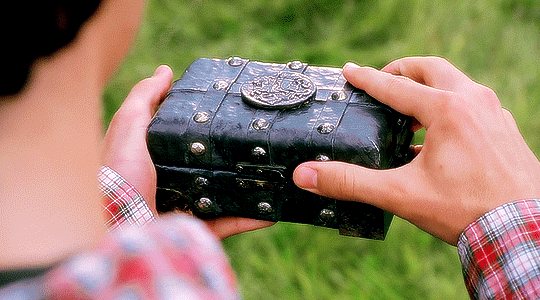






My mother bought [this box] in a Kasbah in Morocco. A little guy told her it was made from the armor of St. George, the patron saint of boy scouts.
—Lex Luthor to Clark Kent, Smallville, “Metamorphosis”
41 notes
·
View notes
Note
Happy STS! What holidays are celebrated in your wips? Do any of your ocs partake in them?
Thanks for the ask Erin!!
I'm on a bit of a War Witch kick, and since I really need to pin down some worldbuilding in this area, this ask is very well-timed! (Under a readmore for the convenience of those who don't want to listen to me ramble lol)
Starting from the top, there are the God Days; holidays dedicated to a specific god. Patron gods of a county - such as Korin's twin patron gods - can have God Days that last up to a whole week, while lesser known or lesser liked gods may only see a single day (or part of a day). In Korin, prominent God Days are state-sponsored and funded, and almost always mean a day (or days) off of work, a trip to the temple, and participating in activities meant to honor the specific god everyone's celebrating. God Days are times of celebration and community, religious observance for the pious, and taking time to appreciate the specific aspect of life that a specific god embodies.
Example: Vitalex and Morsex, the twin gods of Korin, are the gods of life and death respectively. Vitalex's God Week is usually full of giving life and light - it is held in spring when flowers abound, and there are lantern festivals and candle ceremonies. Morsex's God Week is held in late fall, when plants begin to wither and die, and children play games of leading each other blindfolded and the dead are remembered.
Then there are the 'universal' holidays throughout Korin. There's the holiday of observance for the Shattering, holidays celebrating a handful of important rulers, some to mark an important battle of the past. Not everyone observes these days, but most of the major cities mark these are banking holidays. These days usually have less celebrating, but prominent officials and the current King/Queen will make speeches and hold parades to commemorate the day.
In more rural areas, there are yearly festivals and holidays to commemorate aspects of agricultural life - planting and harvesting, aspects of livestock care, the like. These ones are specific to individual communities, and can 'wander' depending on the particular year's weather and hardships.
-
Now, for the characters!
Jon Terazza doesn't observe holidays, really. He may be a soldier and an employee of the state, but most of his time is spent away from civilization, scouting and maintaining order in the Drushlea Mountains. If his unit's occasional returns to civilization coincide with a holiday, he'll participate in the food and drink (and occasionally a dance or two) but for the most part, he just doesn't care.
Mari Adairon loves holidays and festivals. She's not very into the religious aspect of God Days, and rarely sets foot in a temple, but she is always excited for the days. Her mother Roisin has brought along some Aillan holidays that the Adairon family observe in the quiet of their home, but for the most part - since they live in a major Koric city - they really only observe the primary Koric holidays and God Days.
Nate Kraemer is rather ambivalent about holidays. Being a boy from the upper crust of society, holidays usually just mean a well-to-do ball or soiree where the rich show off and pretend they still care about the gods. Since meeting Mari and being introduced to the ways 'commoners' celebrate God Days, he's grown a bit fonder of them, but he doesn't like state holidays. His father being a Senator (think Roman patricians and English lords - landowners and politicians with lots of power) means that all state holidays must be observed, usually in the public eye, and usually very boringly. Nate doesn't enjoy the boring part.
#storyteller saturday#WIP: War Witch#thank you for finally forcing me to name the Koric twin gods!#i've been dragging my feet on that for a very long time
3 notes
·
View notes
Photo

Patron Saint of Boy Scouts St. George Feast Day: April 23rd Both Calendars
It is uncertain when Saint George was born and historians continue to debate to this day. However, his death date is estimated to be April 23 303 A.D.
The first piece of evidence of George's existance appeared within the works of the Bollandists Daniel Papebroch, Jean Bolland, and Godfrey Henschen's Bibliotheca Hagiographica Graeca. George was one of several names listed in the historical text, and Pope Gelasius claimed George was one of the saints "whose names are justly reverenced among men, but whose actions are known only to God."
George was born to a Gerontios and Polychronia, a Roman officer and a Greek native of Lydda. Both were Christians from noble families of the Anici and George, Georgios in the original Greek, was raised to follow their faith.
When George was old enough, he was welcomed into Diocletian's army. by his late 20's, George became a Tribunus and served as an imperial guard for the Emperor at Nicomedia.
On February 24, 303 A.D., Diocletian, who hated Christians, announced that every Christian the army passed would be arrested and every other soldier should offer a sacrifice to the Roman gods.
George refused to abide by the order and told Diocletian, who was angry but greatly valued his friendship with George's father.
When George announced his beliefs before his peers, Diocletian was unable to keep the news to himself.
In an effort to save George, Diocletian attempted to convert him to believe in the Roman gods, offered him land, money and slaves in exchange for offering a sacrifice to the Roman gods, and made several other offers that George refused.
Finally, after exhausting all other options, Diocletian ordered George's execution. In preparation for his death, George gave his money to the poor and was sent for several torture sessions. He was lacerated on a wheel of swords and required resuscitation three times, but still George did not turn from God.
On April 23, 303 A.D., George was decapitated before Nicomedia's outer wall. His body was sent to Lydda for burial, and other Christians went to honor George as a martyr.
Saint George and the Dragon
There are several stories about George fighting dragons, but in the Western version, a dragon or crocodile made its nest at a spring that provided water to Silene, believed to be modern-day Lcyrene in Libya.
The people were unable to collect water and so attempted to remove the dragon from its nest on several ocassions. It would temporarily leave its nest when they offered it a sheep each day, until the sheep disappeared and the people were distraught.
This was when they decided that a maiden would be just as effective as sending a sheep. The townspeople chose the victim by drawing straws. This continued until one day the princess' straw was drawn.
The monarch begged for her to be spared but the people would not have it. She was offered to the dragon, but before she could be devoured, George appeared. He faced the dragon, protected himself with the sign of the Cross, and slayed the dragon.
After saving the town, the citizens abandoned their paganism and were all converted to Christianity.
Interesting Facts
1. Saint George stands out among other saints and legends because he is known and revered by both Muslims and Christians.
2. It is said Saint George killed the dragon near the sea in Beirut, thus Saint George bay was named in his honor.
3. Saint George's feast day is celebrated on April 23, but if it falls before Easter, it is celebrated Easter Monday.
4. The Russian Orthodox Church celebrates three St. George feast days each year - April 23 as is expected, November 3, to commemorate the consecration of a cathedral dedicated to him in Lydda, and on November 26, for when a church in Kiev was dedicated to him.
5. In Bulgaria, his feast day is celebrated May 6 with the slaughter and roasting of a lamb.
6. In Egypt, the Coptic Orthodox Church of Alexandria calls St. George the "Prince of Martyrs" and celebrates on May 1. There is a second celebration November 17, in honor of the first church dedicated to him.
7. Saint George is the patron saint of England and Catalonia and his cross can be found throughout England.
8. In older works, Saint George is depicted wearing armor and holding a lance or fighting a dragon, which represents Christ's enemies.
Prayer for St. George
St. George,
Heroic Catholic soldier and defender of your Faith, you dared to criticize a tyrannical Emperor and were subjected to horrible torture. You could have occupied a high military position but you preferred to die for your Lord. Obtain for us the great grace of heroic Christian courage that should mark soldiers of Christ. Amen
5 notes
·
View notes
Note
Nooooooo Chris bby no
CW: Noncon touching, referenced noncon, noncon kiss trauma/panic response, pet whump, intimate whumper, creepy whumper, crass/derogatory language
Someone comes in, uses the bathroom, washes their hands, and leaves. Chris can see them over the handler's shoulder through the crack between the closed stall door and the side, flimsy metal that doesn't quite meet.
He breathes in shuddery, shaking gasps, but he doesn't - he can't - make a sound. The handler holds him tightly, the weight and heat of his body forcing Chris back against the wall. They're both still clothed, but the handler's breath is hot on his ear and Chris might throw up, or bite, or...
No he won't.
He'll be still and silent and good.
He always does this - he always freezes up. Somewhere inside himself, derailed, there is a train wreck screaming at him to fight or flee, but Chris can't do that, he's never done that, he's always done just what he is doing now.
Freeze, and be good, and hope that it won't be as bad as he knows it can be. As it has been. As it will probably be again.
His breath hitches, and the handler jams a shoulder into his collarbone to quiet him. The man who came in leaves, and it's only the two of them again.
"What do you do pet, with your barcode sawed off, huh? What makes money for your fancy lattes these days? You got a sugar daddy?"
The handler kisses him before he can answer. The press of lips on his is familiar, repulsive, inevitable. It would always be this, in the end, wouldn't it?
He has an acceptance letter to a real college pinned to the fridge, and it doesn't matter, because once a pet, always a pet, and never anything more.
Chris chokes on his disgust, shakes his head to the question, twists away from the handler's attempt to kiss him again. His clip is torn loose and his hair falls into his face, a blue curtain, not a wall he can hide behind.
"St-stop-"
The handler grips his chin and forces his head up, to meet his eyes. Chris whines, hates himself. He's supposed to be better now, stronger, and he's not. Still Baldur, still 223499, still nothing, still just a black hole with legs. No one at all.
Not a person.
Just a pet.
"You know better," The handler chides, patronizing. Chris sees him through a blurry sheen of tears, fuzzy and unfocused. "You don't get to know that word anymore."
You have two options, trainee. You can choose to be good, or choose to get hurt. I always give you options, don't I?
Yes, Handler Petrus-
"How do you answer a handler, pretty boy?"
Chris whispers, "N-no, sir, I d-d-don't have-... have, have... have a, a, a sug, a s-sugar daddy-"
"Then what? Whoring yourself like the other Romantics? That how you make a living?" Chris shudders, managing a breathy no, sir, and the handler chuckles, one hand still gripped tight over his throat, the other slipping up under Chris's shirt to find the layer of compression fabric beneath. "Oh, you're a double-wrapped fucking Christmas present, huh? Well, I know where we can go. I'll get a room at a motel. Show me you still know your tricks, pet, and I'll even let you go without turning you in."
"You-... You will?" Hope, dizzying as any vertigo, fights for space in his racing chaotic mind.
Chris's head starts to spin. His hands, pressed to the cool walls, tap desperately, but there's no soothing to be had here. Words are starting to fall apart, spark and dissipate, lose connection with his brain.
He manages, "Y-you... You, you, you... You p-promise? If I-I'm good?"
"Scout's Honor. Did you come here alone, pretty boy?" The handler's fingers twist some of Chris's hair, tuck it behind his ear, fiddle with the six piercings there, pressing rough thumb over them one by one. "Hm?"
Tears run warm down Chris's cheeks as he hiccups on a sob and whimpers, "Yes, s-sir, I'm al, al, alone."
He lets himself be pulled out of the bathroom and towards the door with his head down and his eyes on the floor.
He"s a terrible liar - but he's crying so hard that the handler can't tell.
Look up, he thinks, desperately. The handler's grip on his hand is bruising tight, an arm around his lower back, a whispered litany of the things he is going to do to Chris when they get to the motel.
Chris says yes to them all. He doesn't remember anymore how to say no.
He doesn't get to remember no.
They move across the cafe to the door, to all appearances a man concerned about his upset friend. Chris can't cry for help. Pets don't ask for help. They don't need it.
They're pets.
He's a pet.
Everything else he's ever tried to be is a lie.
And yet...
Look up, he pleads, inside his own mind. Look up, see me, help me, help.
Look up, Antoni.
---
Tagging: @burtlederp , @finder-of-rings , @endless-whump , @whumpfigure , @slaintetowhump , @astrobly @newandfiguringitout , @doveotions , @pretty-face-breaker , @boxboysandotherwhump , @oops-its-whump @moose-teeth , @cubeswhump , @cupcakes-and-pain @whump-tr0pes @whumpiary @orchidscript , @itallcomesdowntopain
#whump#box boy#pet whump#box boy universe#creepy whumper#intimate whump#intimate whumper#noncon touch#referenced noncon#noncon kiss#chris the strawberry blond romantic#derogatory language#trauma response tw#chris and the handler series
189 notes
·
View notes
Text
Ile de Re (Chapter 6)
1 2 3 4 5 6 7 8
Claire woke first the next morning. They’d stopped spooning at some point during the night and Keanu was lying on his back with one arm up on the pillow near his face. He looked angelic and so much younger than his 55 years.
Claire thought back to the night before and the powerful physical sensations and feelings he’d stirred in her.
She was confused by her decision now to ask him to make love to her. It was what she needed and desired at the time, but she hadn’t listened to his warning about the consequences and now, despite the pleasure and comfort it had brought her, she regretted it. A door had been opened that couldn’t be closed and she wasn’t sure walking through it was going to bring her happiness. She was afraid she was falling in love with a man 20 years her senior who, it seemed, thought it was too late to have children – something she had always thought would be in her future. She needed to decide quickly what to say to him when he woke up. Would it be awkward? – normally with a lover you knew if you were going to wake up and snuggle then make love again or wake up and walk away. Even if she wanted to, she couldn’t do the latter as it was her home and he was her guest. Maybe they could just go back to being friends - “yeah right, who am I kidding after what he did for me last night?!”
She knew honesty was the best policy but she wasn’t ready to have a deep conversation just yet – especially one that she feared might mean he would leave because he thought it couldn’t work between them. She wasn’t a game player or manipulator, but she wasn’t past using avoidance as a tactic.
She lay next to him then, just staring at and admiring the perfect bone structure of his face and his strong, muscular arms. He seemed to sense her watching him and opened his eyes.
“Bonjour” she greeted him
“Bonjour to you too” he said softly smiling.
“I hope you slept well, listen I’m going to go fetch the bread for breakfast. Can you start a pot of coffee? - and then, if it’s OK with you, after we’ve eaten, I’d like to do something fun for a change. Maybe we can go and hire you a bike and I can show you some more of the island? You should experience the cycling here before you leave.”
“OK, sure - I’d like that very much”
He desperately wanted to know how she felt about last night but thought that maybe comfort was all she had wanted after all and just for one night. Maybe she hadn’t felt the same connection and was able to just walk away – if so, he’d have to too. He’d slept restlessly because of his thoughts about it. He held his curiosity in check and rose with her to dress and get breakfast ready.
They feasted on coffee, croissants and pain au levant (sour dough) with butter and jam. Keanu joked that he’d need to back to the gym after this trip as she could feel his stomach thickening was a result of all the delicious food.
“Well the bike ride will help you burn off some calories I guess” she said
After their plates were empty, they tidied away and prepared a few things to take with them on the bike ride – a bottle of water, a first aid kit and some biscuits plus a rug in case they wanted to stop and rest somewhere. Then they made their way down to the village and the bike rental place to find a suitable bike. She walked along with her own bike so they could ride on together on their trip straight away.
They headed south first to Ars en Re across the vine fields - its church spire (tall and white and topped with a black cone) acting as a guide to them of how far they had left to go.

They stopped there and mooched around the shops including an artists’ studio on the harbour. Keanu recognised the artist’s work from postcards he’d seen in the local shops and decided to go in and look at purchasing a full-size piece. They really captured the essence of the island and he thought he’d like a memory of it on his wall at home. He found one with sailing boats and the harbour and church in the background and bought it - Claire helped with arranging extra payment for carriage home rather than risk damaging it on the flight.

Afterwards, they carried on across the salt marshes where they stopped to buy some local salt ‘en directe’ that Claire said she’d take home for cooking. The cycle paths were empty with it being early in the season and they could ride side by side and talk. They each purposefully kept the conversation light – the film, the restaurant , the new John Wick film that Keanu would start filming soon and so on - no mention was made of the night before.
It was 1pm when they reached the next village (La Couarde sue Mer) and they chose a little restaurant in the village centre that Claire knew to have lunch.

Keanu had gone in to use the bathroom passing a man in chef’s whites as he went who turned out to be the owner. On seeing Claire arrive he had immediately come out – he kissed her on both cheeks and offered his condolences about her father. Keanu thought he recognised him from the wake – he hoped he was gone by the time he got back - he didn’t want any particular attention. Happily, that was the case and they enjoyed a bowl of mussels and chips each only getting a couple of curious glances from waiters and fellow patrons – the look Keanu recognised as ‘don’t I know you from somewhere?’!
Claire encouraged him to take the Eclade de moules which was the local speciality – a slightly creamy sauce over the mussels flavoured mildly with curry. Claire took the traditional moules marinieres and said they could swap if he didn’t like the “eclade” – once he’d tucked in, he wasn’t going to relinquish the bowl however – it was surprisingly tasty!
After lunch, they went down to the beach for a while and sat on the rocks watching the waves. Claire pointed out the tourist beaches along the coast down to Le Bois Plage and St Marie and the wilder coast up towards her home village. They could also see the other larger island of Oleron across the way and she shared some of the local history.
“We could take a boat trip if you like one day – there’s some really interesting history about Napoleon on Ile d’Aix with a little museum to explore.
“No way!” Keanu chuckled “that would be most excellent”
“are you being sarcastic?” Claire asked, a quizzical look on her face.
“We really need to watch a couple of my movies you know!” he said emphatically – “I’ll have you know, that was not sarcasm but a reference to a film called “Bill and Ted’s Excellent Adventure” in which I travel though time and kidnap Napoleon to help me pass a history exam. It’s kind of famous!”
“Oh sounds weird! - I’m so sorry I don’t know it”
“Well, I guess you would only have been about, errm, let’s do the math, 5 when it came out! He laughed and shook his head, “Man I am so old!”
“Well you don’t seem it to me!” she said meeting his eyes and blushing as did he.
“Hey why don’t we try get Netflix or whatever set up later and I can show you it - then maybe we could take that boat trip next time it’s running and see all that Napoleonic history?” They had had such a nice time so far that day that he’d started to forget about the night before and he wanted to keep things light and away from any compliments between them which might take them back into that territory.
They agreed to return home next, stopping for provisions for dinner. Later they booked tickets for the boat trip when it would next be running in a couple of days and organised their film night for the evening.
They chose Bill and Ted and Point Break to watch that night, both of which Claire loved especially the Napoleon moments in B&TEA and the foot chase in Point Break.
Over the next few days they had a total break from death related jobs and from the location scouting with Claire playing tourist guide. They did more cycle rides through forests and to beaches. Claire joked that Keanu should demonstrate his surfing skills but he said it had been way too long since he’d done it – he’d get wiped in the spring tides!
The boat trip was a wonderful excursion and took them from the island’s capital St Martin then around the coastline and under the island’s spectacular bridge before heading out past Ile d’Oleron and the famous Fort Boyard (where the real life Papillon of film fame was imprisoned) Finally it went on to Ile d’Aix where Napoleon stayed in exile before going to St Helena. Keanu loved history and relished seeing the house where he had stayed and the artefacts. Before catching the boat home they also had chance to grab a sandwich and walk around some of the island which was tiny at only 7km around.
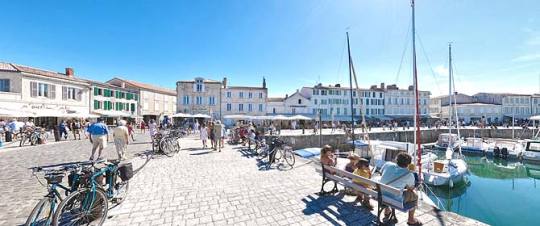
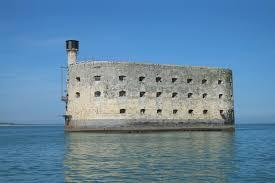
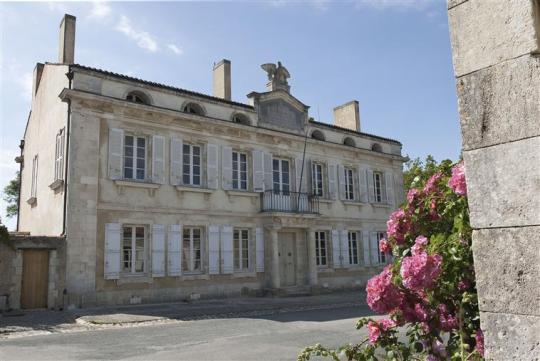
By the time they got home they were exhausted and had a simple supper of bread and cheese before slumping down to watch another movie. Claire was loving watching his old films that she’d missed growing up. Yesterday had been Speed and The Matrix – quite an overwhelming action combo. Tonight they thought one would be all they could manage but they struggled to decide. Keanu had made a list of the titles that he thought were the key ones she should see and numbered them off - Claire picked a number - it was “The Lake House.”
They settled next to each other on the sofa. At the porch scene, Claire needed a tissue and by the end, tears were streaming down her face.
“That was truly beautiful” she sniffed as the theme song struck up again.
“Thanks, I like it” Keanu said humbly. Their eyes locked as McCartney sang ‘this never happened before’ and ‘this is the way it should be for lovers’ over and over. Claire looked down and took a breath.
“It never happened to me before either” she whispered looking up again, her eyes pleading with him to understand her meaning.
“You’re talking about what we did the other night?” he stated
“Yes she said, well not just that but yes, it was ………. beyond wonderful. I know I asked only to be comforted, and I needed the physical release - and you gave me that ……… but then I got something else I wasn’t expecting. The, errrm
“Connection?” he interjected.
“Yes!” she agreed emphatically.
“A connection like that, well it was something I’ve only felt once before ………… and, well, it took my breath away”, she looked at him searching to see his thoughts reflected in his expression.
He took her hand in his and whispered
“I felt it too.”
Her shoulders visibly relaxed as the knowledge that the feelings were shared.
“So, what are we going to do about it?” she asked?
“Honestly, I don’t know. That night, I could hardly sleep for thinking about it. I wondered how you felt – then after you just never mentioned it these past few days, I decided that maybe one night of physical closeness was all you wanted. I need you to know that I didn’t come here planning to take advantage of you, I just wanted to help but now I feel so much for you after such a short time”
He paused and she could read the doubt in his eyes
“But?”
“But” he paused again trying to find the right words “even though my feelings are so strong, I don’t know if we’re right for each other, I mean because I may not be able to give you what you want from life, because maybe I’m too old for you”
“You’re only as old as you feel right?” she countered
“Yes, but shit man it’s 20 years! And there’s mortality to consider, and ……” there was a (quite literally) pregnant pause.
“babies” she said, naming the elephant in the room.
“and yes, there’s babies – if you want them. I’m not sure I do, not now. I’m set in my ways. I’m often away filming for months on end. I will be again soon, in New York, for several months. It can be quite a gypsy existence. And who knows if my sperm are still capable!’ he chuckled.
She leaned in and kissed him gently, cupping his cheek with her left hand
“So what happened to seizing the day, to living in the moment because we’re all gonna die anyway? - that’s what you said on the plane when we talked about grief.”
He repeated her gesture, softly kissing her. Closed lipped and cupping her face in his hand.
“Claire I just don’t wanna hurt you and I’m scared I might. If it weren’t for the age difference, I’d rush to start a relationship with you but” he paused again. “There’s a character I played in a movie. I think you’d like it. It’s romantic and there are vineyards in it! Anyway my character, Paul, he’s married, but to a wife who he married in a hurry in the war and it turns out when he returns that they’re completely incompatible. He meets and falls in love with another woman who falls for him too but after kissing her and very nearly making love, he pulls away and says <<I want you more than anything Victoria, you can't imagine how I want you. But I'm not free and I won't hurt you that way, I won’t >>”
He recited it sincerely, word for word from the movie, reliving the moment as Paul Sutton. So I feel a bit like him. I’m not married, well not to a woman at least, but maybe a little bit, no a lot, to acting and to my freedom to pursue it. I want to do the right thing by you and I’m not sure getting into a relationship is it.”
Her eyes filled with tears and he implored her to understand, a pained expression in his eyes.
“I have commitments too you know, things I’d have to compromise on to make time for you. That’s what relationships are about right? Love on the one hand and compromise on the other?”
“Ah ha” he replied yet still sounding doubtful
Claire sighed, her eyes sad and still teary “well, I’m going to bed. I’m glad we talked but I’m tired now. I’ll see you in the morning”
Keanu didn’t answer, staring glumly at his hands which lay in his lap and she got up and went upstairs to bed.
“Fuck” he whispered as he sat alone and disconsolate.
He went to bed too where he slept restlessly, thinking each time he stirred that he could just go to her and say yes to trying to make it work, but the more he thought about that option, the more the fear of failure and heartache if it didn’t work grew in his mind. By 6am, he was convinced that fleeing the scene was the only option.
He had two more restaurants to visit within a 100 miles of La Rochelle and decided to go to them on the motorbike he’d hired and take some time to think. He wrote Claire a note explaining that he thought a breather would be good right now and he’d be back in a couple of days. Slinging a few clean clothes and his toiletries in a backpack, he hit the open road.
1 2 3 4 5 6 7 8
#keanu#keanu reeves fanfic#keanu reeves fanfiction#keanu reeves#romance#fluff#france#angst#heartache
2 notes
·
View notes
Photo

𝒫𝓇𝒾𝓃𝒸𝑒 𝐸𝒹𝓌𝒶𝓇𝒹
♕ 𝐹𝓊𝓁𝓁 𝒩𝒶𝓂𝑒: Edward George Nicholas Paul Patrick
♕ 𝐹𝓊𝓁𝓁 𝒯𝒾𝓉𝓁𝑒: His Royal Highness Prince Edward The Duke of Kent
♕ 𝐵𝓸𝓇𝓃: Wednesday, October 9th, 1935 at No. 3 Belgrave Square in London, England
♕ 𝒫𝒶𝓇𝑒𝓃𝓉𝓈: His Royal Highness Prince George The Duke of Kent (Father) & Her Royal Highness Princess Marina Duchess of Kent (Mother)
♕ 𝒮𝒾𝒷𝓁𝒾𝓃𝑔𝓈: Her Royal Highness Princess Alexandra The Honourable Lady Ogilvy (Sister) & His Royal Highness Prince Michael of Kent (Brother)
♕ 𝒮𝓅𝓸𝓊𝓈𝑒: Her Royal Highness Katherine The Duchess of Kent (M. 1961)
♕ 𝒞𝒽𝒾𝓁𝒹𝓇𝑒𝓃: George Windsor Earl of St Andrews (Son), Lady Helen Taylor (Daughter), Lord Nicholas Windsor (Son), & Lord Patrick Windsor (Son: Stillborn on Wednesday, October 5th, 1977)
♕ 𝐸𝒹𝓊𝒸𝒶𝓉𝒾𝓸𝓃: Ludgrove (In Berkshire, England), Eton College (In Berkshire, England), Institut Le Rosey (In Rolle, Switzerland), The Royal Military Academy Sandhurst (In Berkshire, England)
♕ 𝐼𝓃𝓉𝑒𝓇𝑒𝓈𝓉𝓈 𝒶𝓃𝒹 𝒲𝓸𝓇𝓀: Interests: Armed Forces (Air Force, Allied Code-Breaking, Arms, Armour, Army, Artillery, Aviation, Blues and Royals, Children of Deployed Parents, Defense Studies, Fallen Soldiers, Lifeboat Services, Life Guards, Navigators, Navy, Pilots, Retired Service People, Security Studies, World War 1 & 2), Business (Business Leaders, Community Leaders, Investments, & Trade), Education (Electronics, Engineering, Chemistry, Global Aerospace, Heritage of Counties, Informational Technology, Science, & Vocational Training), Health (Apothecaries, Burn Treatment, Chest Illness, Chronic Fatigue Syndrome, Dentists, Doctors, Environmental Medicine, Heart Illness, Hospitals, Leukemia, Myalgic Encephalopathy, Occupational Medicine, Pharmacists, Plastic Surgery Treatment, Post Viral Fatigue Syndrome, Strokes, Surgical Research, & Veterinarians), Other (Agriculture, Conservation, Geography, & Railways/Trains), People (Boy Scouts, Civil Servants, Freemasons, Joint Cultures, Motor Safety, Polish People, Social Clubs, The Disabled, & Young People), Sports (Alpine Ski Racing, Bobsled, Cricket, Croquet, Falconry, Fishing, Golf, Hunting, Lawn Tennis, Race Car Driving, & Skiing), & The Arts (Art History, Broadcasters, Cloth-making, Dance, Journalism, Literature, Music, Opera Music, Photography, & Writers). Work: Associate Member of The International Lawn Tennis Club of Great Britain, Chancellor of The University of Surrey, Fellow of The Royal Society, Founding Member of The International Baccalaureate School, Freeman of The City of London, Freeman/Liveryman of The Honourable Company of Air Pilots, Freeman/Liveryman of The Worshipful Company of Mercers, Gold Card Life Member of The The Children’s Charity Variety, Grand Master of The Most Distinguished Order of St. Michael and St. George, Grand Master of The United Grand Lodge of England, Grand President of The Masonic Charitable Foundation, Honorary Chair of Gilwell Fellows, Honorary Doctor of Law of The University of Leeds, Honorary Doctor of Philosophy of London Metropolitan University, Honorary Fellow of The Charted Management Institute, Honorary Fellow of The Institution of Engineering and Technology, Honorary Fellow of The The Institution of Mechanical Engineers, Honorary Fellow of The Royal Aeronautical Society, Honorary Fellow of The Royal College of Surgeons of England, Honorary Fellow of The Royal Society of Literature of the United Kingdom, Honorary Fellow of The Royal Society of Medicine, Honorary Freeman of The Worshipful Society of Apothecaries of London, Honorary Life Member of The Band of Brothers, Honorary Liveryman of The Worshipful Company of Clothworkers, Honorary Liveryman/Assistant Emeritus of The Worshipful Company of Engineers, Honorary Member of Cambridge University’s Scientific Society, Honorary Member of The Guild of Motoring Writers Limited, Honorary Member of The Household Division Yacht Club, Honorary Member of The Royal and Ancient Golf Club of St. Andrews, Honorary Member of The Royal Automobile Club, Honorary Member of The Royal Photographic Society, Honorary Member of The Work Foundation, Honorary Membership of The Old Wellingtonian Lodge, Honorary Preses of The Royal Caledonian Hunt, Honorary President of The Airlander Club, Honorary President of The Royal Geographical Society, Honorary President of The Royal United Services Institute International, High Steward of The Borough Council of King’s Lynn and West Norfolk, Joint Associate Member of The Lawn Tennis Association, Joint Patron of The Anglo-Jordanian Society, Liveryman of The Worshipful Company of Salters, Master of The Lodge of Antiquity, Member of The Blue Seal Club, Member of The Countryside Alliance, Member of The Honourable Artillery Company, Member of The Mountbatten Medal Advisory Panel, Patron of Bal Polski, Patron of Bloodwise, Patron of Boundless by CSMA, Patron of Buck’s Club, Patron of The Canterbury Cathedral Trust, Patron of The Catalogue Raisonne of Works by Philip de Laszlo M.V.O. P.R.B.A. 1969-1937, Patron of Combined Cavalry Old Comrades, Patron of Endeavor National Youth Organization, Patron of Everyone Can!, Patron of St. Mungo’s, Patron of The Army Winter Sports Association, Patron of The Bartok Festival, Patron of The Bletchley Park Trust, Patron of The British Computer Society, Patron of The Charles Douglas-Home Memorial Trust, Patron of The Devonshire and Dorset Regimental Association, Patron of The Edge Foundation, Patron of The Freemasons’ Fund for Surgical Research, Patron of The Gallantry Medallists’ League, Patron of The Hanover Band, Patron of The Institute of Advanced Motorists, Patron of The Institute of Export, Patron of The Institute of Occupational and Environmental Medicine at Birmingham University, Patron of International Musicians Seminar Prussia Cove, Patron of The Kandahar Ski Club, Patron of The Keighley & Worth Valley Railway Preservation Society, Patron of The Kent County Agricultural Society, Patron of The Kent County Cricket Club, Patron of The Lifeboat Fund, Patron of The London Philharmonic Orchestra, Patron of The Myalgic Encephalomyelitis Association, Patron of The National Army Museum, Patron of The Newbury Spring Festival, Patron of Opera North, Patron of The P.G. Wodehouse Society, Patron of The Polish Hearth Club (Ognisko Polskie), Patron of The Restore Burns and Wounds Research, Patron of The Royal Air Force Charitable Trust, Patron of The Royal Armored Corps War Memorial Benevolent Fund, Patron of The Royal Institution of Australia, Patron of The Royal West Norfolk Golf Club, Patron of The Scots Guard Association, Patron of The Ski Club of Great Britain, Patron of The Society for Army Historical Research, Patron of The Staff College Club, Patron of The Supreme Council 33°, Patron of The Tank Museum, Patron of The Tree Council, Patron of Trinity College London, Patron of The Trinity Laban Conservatoire of Music and Dance, Patron of The UK Friends of the Felix-Mendelssohn-Bartholdy-Stiftung Foundation, Patron of The University of Surrey’s Postgraduate Medical School, Patron of The Watlington Hospital Charitable Trust, Patron of The Wimbledon Lawn Tennis Museum, Patron of Wigmore Hall, President In Chief of The British Racing Drivers’ Club, President of The All England Lawn Tennis & Croquet Club, President of The Anmer Club, President of The Army and Navy Club, President of The Association of Men of Kent and Kentish Men, President of The Cavalry and Guards Club, President of The Chest/Heart/Stroke Medical Research Funds of Scotland, President of The Commonwealth War Graves Commission, President of The Duke of York’s Royal Military School, President of The Engineering Council, President of The Football Association, President of The Henley Society, President of The King Edward’s VII’s Hospital (Sister Agnes), President of The King’s Lynn Festival Limited, President of The Noel Coward Society, President of The Royal Air Force Benevolent Fund, President of The Royal Armories Development Trust, President of The Royal Choral Society, President of The Royal Institution of Great Britain, President of The Royal Nation Lifeboat Institution (RNLI), President of The Royal United Services Institute for Defense and Security Studies, President of The Scout Association, President of The Stroke Association, President of The Board of Trustees of The Imperial War Museum, President of The UK Trustees of The His Royal Highness The Duke of Edinburgh’s Commonwealth Study Conference Leaders, President of Wellington College, Royal Bencher of The Honourable Society of Lincoln’s Inn, Royal Fellow of The Royal Academy of Engineering, Royal Member of The Royal Society Club, Royal Patron of The Admiral Ramsay Museum, Royal Patron of The American Air Museum in Britain, Royal Patron of The British-German Association, Royal Patron of The Dresden Trust, Royal Patron of The Honourable Society of Lincoln’s Inn, Royal Patron of The Last Night of the Proms in Crakow, Special Representative (Formerly a Vice-Chairman) for The United Kingdom’s International Trade & Investment, Vice-Chairman of The British Overseas Trade Board, Visitor of Cranfield University, & Visitor of The Centenary World Scout Jamboree.
15 notes
·
View notes
Text
Personal Story
It was the third of December of 2002 when the fourth and last child of Mr. Albert and Ms. Cynthia Asuncion was born. An avid fan of Justice League they named him Bruce Wayne. He looked exactly the same as his Father though a whiter version of him. The baby grew up as a loving and understanding child, being a baby his brother Brian Austin took care of him, loved him and took full responsibility as his Kuya. On the other hand, Bruce Wayne’s Ate Kristine Claire and Ela Mae also looked after him and played with him all the games they wanted to teach him. Their family lived in a humble home located in Brgy. Doclong 2nd, San Clemente, Tarlac together with their family relatives. The family lived simply and instills good morals and conduct to their children to be able to prepare their children for the future.

Growing up, Bruce Wayne is fond of playing outdoor games with his neighbors; he used to play Tagutaguan, Tumbang Preso, Patintero and the all-time favorite Jolens and “Tecks”. From a family of Teachers, Bruce was taught by his parents on how to read and write at an early age. He entered kindergarten at the age of 2 and her mother was his first teacher at Cacamilingan Sur Development Center where he learned the basics of education, from what boys and girls wear, to the numbers and the whole alphabets and to singing to the Pambansang Awit. Bruce Wayne excelled in class maybe because his teacher is his mom or maybe because he is really a bright child.
As he continued to grow and loved learning, he entered Camiling Central Elementary School for his primary studies, together with his Kuya Brian Austin they wandered the place and stayed for almost 6 years until they graduated. In primary school, Bruce Wayne showed his love for learning, not just in the academe but also for extracurricular activities. He joined poster making and slogan making contest, participated in celebration months like the Nutrition Month, Buwan ng Wika and United Nations. During intramurals he also joined to learn camaraderie and sportsmanship among men, he played badminton and volleyball as a fresh start to sports. At exactly March 7, 2015, Bruce Wayne graduated in Elementary Education, he almost got the Boy Scout of the Year Award but nonetheless he still received a medal for participating in the Provincial Jamboree.
At the age of 12, Bruce Wayne entered Camiling Catholic School as a freshman student. During his first year and second years in High School he built his enthusiast in studying, despite the endless projects and nearing deadlines submission he was able to pass all his projects. Does his homework after school and even helped his fellow classmates with theirs. It was his 3rd year or Grade 9 when he represented his section St. Raymond of Penafort during the Buwan ng Wika Celebration to be the next Ginoong Buwan ng Wika of his school, not a pro of pageants but still he did his very best to make not only his family proud but also his classmates who chose him to be their section’s representative. A first timer, Bruce Wayne was not able to be part of the Top 5 but still is very humble and happy for such a wonderful experience on joining such prestigious event of the school. At the end of his Grade 9 School year, Bruce received a Best in Service Award for his industrious deeds in school. During his third year is also his third year in joining the Altar Server Ministry. He served in the St. Michael the Archangel Parish Church during Sundays and during Lenten Seasons as well. Every Sunday he spent most of his time in the church and also helped other staring altar servers. Bruce Wayne has been committed in his service that he stayed in the ministry up to his 4th year in school. It was a fun filled and a full of learning experience to study in Camiling Catholic School said Bruce. He graduated last March 30, 2019 with Honors and was accompanied by his family during one of the highlights of his life at the age of 16.

After graduation, Bruce had to think real quick for his next step to be able to fulfill his journey on becoming a Civil Engineer someday, together with his classmates and guidance of his family he was able to enter the next chapter of his life as a Senior High School in the same school, Camiling Catholic School under STEM 2 Section with his Adviser Karla Mae Macatangay. As to Bruce, it was too early to conclude but this school year is by far the most challenging one, he must say that it feels like he is really on the next level of studying, a glimpse of the real world because of the complexities of the subjects and a different approach from his past school years. Bruce is excited to what the next days will the school has to offer to him and how he can be able to cope and also be able to balance his studies and other activities like going to the gym to stay fit, being an altar server, a basketball player and an MVP in the making.

Being the bunso in the family, Bruce Wayne is not relieved in doing household chores; he was also assigned as a dishwasher during afternoons and alternates with his Kuya in the evening. He also took full responsibility in helping his parents run their business, they have a food cart located in the 2nd Floor Food Court Section of the Camiling Public Market, a Cellphone Repair and Accessories Shop and their newly opened Computer/Internet Shop named TechShed, he is inviting everyone to go and patronize their business and help Bruce Wayne to finance his studies.

Looking forward for the years to come, Bruce dreamed of becoming a bachelor civil engineer and building his own dream house and helping his family one day. With a positive attitude and a spirited mind set he knew that his dreams will come true.
2 notes
·
View notes
Text
The real women of Georgian era Britain & Ireland that inspired ‘Harlots’ (Part 2)
Georgian Britain and Ireland were full to bursting with brothels and bagnios, with the sex industry being one of 18th century Britain’s most lucrative enterprises. Whilst the women and girls who filled them enraptured the nation, their voices have all too often been lost to history and in favour of their aristocratic counterparts and greater men who sought to hide their own seedy practices. Harris’ List of Covent Garden Ladies, an annual gentlemen’s guide to London’s most enticing women shows us a vast spectrum of women who lived, worked and loved in a world that both caressed and disdained them. They came from all walks of life, and many tasted great success after finding favour with 18th century Britain’s wealthiest and most influential grandees. Others, however, were not so lucky. This post, created in two parts, sheds a light on some of the more prominent of these women, who left their mark on this country in some way, shape or form, and still captivate those of us who are inclined to adore them in the present day. Many of these women inspired the characters that are now so popular and beloved on Hulu’s period drama series ‘Harlots,’ though the truth is always stranger than fiction. Birth/death dates have been given when I have been able to scout out such information, as well as portraits/prints if they exist, and a source list will be given at the end of both posts.

Mary Robinson (1757-1800) - Though Mary was born into a fairly well-off family, her childhood was troubled from the moment her father abandoned his family in favour of a life with his mistress. Mary’s mother educated all her children and Mary showed a promising aptitude for the arts (she had briefly attended a school run by the social reformer, Hannah More, and been noticed by the great 18th century actor, David Garrick) but this all came to a halt when Mary’s mother arranged a marriage between Mary and an articled clerk named Thomas Robinson, who claimed to have a large inheritance. Though Mary resisted, the marriage eventually took place and Mary came to discover that not only was her husband extravagant and unfaithful, but that he had also never had an inheritance in the first place. They found themselves constantly on the run from debt collectors before eventually, Thomas Robinson was thrown into the Fleet Debtors Prison. Mary and her 6-month-old daughter accompanied him and it is here that Mary began to write poetry, both as a way to pay off her husband’s debt and as a way to escape from reality. One of her earliest patrons and supporters in this endeavour was the socialite, Georgiana Cavendish, Duchess of Devonshire, who sponsored her first publication and encouraged Mary to pursue her dreams. It was this encouragement that prompted Mary, upon the release of her husband from the Fleet, to pursue a career in the theatre. She made her debut as Juliet in ‘Romeo and Juliet’ at the Drury Lane Theatre in 1776, and soon became well known for her breeches parts in various Shakespearean plays. Her most famous role was as Perdita in ‘Florimel and Perdita,’ an adaptation of Shakespeare’s ‘A Winter’s Tale.’ It was in this role that she caught the eye of the Prince of Wales (later George IV). He offered her £20,000 to become his mistress but it took Mary a considerable amount of time to decide whether to leave her husband to become a kept mistress or not. In the end, she decided to take the Prince up on his offer and became his first public mistress. However, he ended the affair in 1781 and did not pay out what he had promised. Mary managed to support herself through an annuity promised by the Crown, after she threatened to expose letters from the Prince she had in her possession. Though she had been a short-lived royal mistress, she was now a celebrity who sustained herself through several love affairs with notable men, after she permanently separated from her husband. Although Mary died alone and in relative poverty, she did spend the last years of her life writing in favour of women’s rights and feminist principles, leading her to earn the nickname of ‘the English Sappho.’

Elizabeth Needham (died May 1731) – Though very little is known about Needham’s early life, she became one of Georgian London’s most notorious bawds, praised for the exclusivity of her brothel in St. James (considered superior to even those of Covent Garden) but reviled for her ruthless brothel-keeping practices and methods of procuring girls. If her girls were unable to pay off their debts, she forced them to take on a higher intake of customers or sent them to the debtors’ prison herself, and if any of her girls became too ill or too old, Mother Needham had very few qualms about throwing them out onto the street. Mother Needham procured her girls through various methods: she poached them from other brothels, picked up homeless girls from the ‘bails’ of Covent Garden, deceived girls eating and drinking at Tom King’s Coffee House, or she acquired them from specialised auctions. Her favourite and most ruthless method, however, was to target girls fresh from the country, many without family (at least not in London) and deceived them with the promise of respectable employment. It earned Needham a fearsome reputation but her house was still popular with many of the country’s most important men, who in turn, were the main reason Needham’s house was raided very little (though during one raid, her house was burnt down, leading to the death of a French officer and the arrest of many of Needham’s girls) and she managed to evade arrest and punishment on multiple occasions. However, in 1730, following the trial of the notorious Francis Charteris for the rape of Ann Bond, a reforming Justice of the Peace named Sir John Gonson began to conduct raids on many of London’s brothels. Charteris had been a frequent customer of Needham’s house and Gonson was tipped off by the residences of Park Place that there was a disorderly house in the neighbourhood. Needham was arrested and hauled up before the court, where she was eventually found guilty of keeping a disorderly house, fined one shilling, expected to find sureties for her behaviour for the next three years and, most importantly, expected to stand twice in the pillory. On the 30th April 1731, Needham was brought to the first pillory in Park Place. Her connections meant she was allowed to be face down for the ordeal and was protected by a number of guards, but the crowd that gathered pelted her with such force that it was feared she would die before the punishment was out. The crowd was so large at one point that a young boy was killed by an iron fencing rail after trying to get a better look. Needham was taken from the pillory, alive but weak, and died the day before her second ordeal in the pillory. She had expressed great fear at having to stand in the pillory again before her death. No contemporary portraits of Needham survive but William Hogarth immortalised her in the first panel of ‘A Harlot’s Progress,’ where Needham lures a naïve Moll Hackabout, newly arrived from the country, to her brothel. Hogarth had met Needham once or twice and said that she was handsome even in her middle age, though her face was covered in patches to hide her pockmarks.
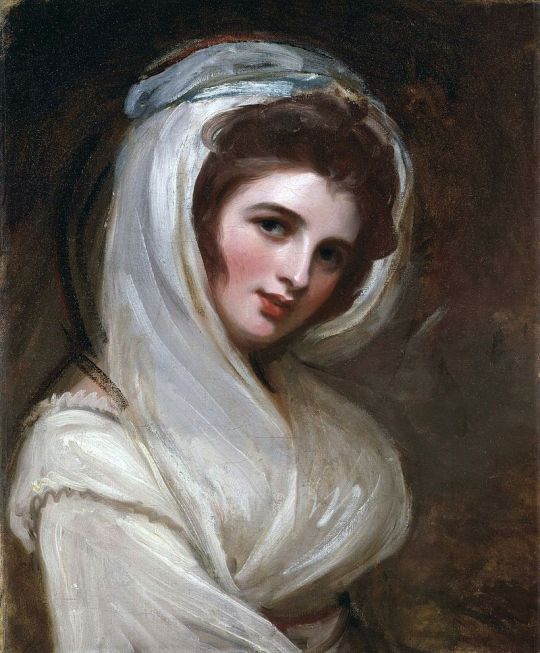
Emma Hamilton (also known as Amy Lyon and Emy Hart) (1765-1815)– Emma is now best known as the great muse of George Romney and the mistress of Horatio, Admiral Lord Nelson, but what is less well known is that Emma began her life in relative poverty, working her way up the ranks through various forms of domestic service and sex work. Born Amy Lyon in a village near Cheshire, Emma was raised by her single mother and her grandmother for the first years of her life. At a young age, she worked as a maid at the home of Doctor Honoratus Leigh, a surgeon working in Chester but who resided in Hawarden, Wales. After Emma was dismissed in 1777, she took a stage coach to London and took a domestic service job for the Budd family in Chatham Place. Here, she befriended a maid named Jane Powell who was also an aspiring actress. Jane let Emma accompany her to her rehearsals for various tragic roles, and Emma’s pretty face and joyful disposition was soon noticed and she was offered a job at Drury Lane Theatre as a dresser and maid to the actresses, one of whom included Mary Robinson. Emma’s next jobs included a posture girl at the Rose Tavern and as a model and dancer at the so-called ‘Temple of Health,’ run by a Scottish quack doctor who offered unconventional, mainly useless forms of treatment for aiding conception. It was around this time that Emma met Sir Harry Featherstonehaugh. Emma was fifteen and beautiful, and Sir Harry was captivated by her. He hired her to play hostess, entertainer and mistress at his estate in the South Downs. She apparently entertained Sir Harry’s guests by dancing naked on a table for them, but soon, Sir. Harry tired of his beautiful, new mistress and threw her over in favour of drinking and hunting with his friends. Emma became friendly with one of Sir. Harry’s guests, the boring but mirthful Charles Greville. When Emma conceived a child with Sir. Harry in 1781 and found herself abandoned by her old lover, it was Greville she chose to turn to. He promised to take her as his mistress and keep her in good style on the condition that she be his and his alone, and that the child be fostered by someone else (her daughter, Emma Carew, would see her often in the future, but for now, she was sent to a schoolmaster and his wife in Manchester). Greville moved Emma into a small house in Edgware Row, where he encouraged Emma to change her name from ‘Amy Lyon’ to ‘Emma/Emy Hart,’ and expected her to dress modestly and keep a quiet social life. Greville gave Emma elocution lessons and occasionally let his friends meet her. It was a rather stifling existence for Emma, as Greville was jealous and controlling, but also embarrassed to be too associated with a woman of such low birth and minor connection. At some point, Greville teamed up with the fashionable artist, George Romney, charging him with taking Emma’s portrait and hoping to make some money from them. Emma quickly became Romney’s muse, and he produced countless pictures of her, all beautiful and expressive, in the 1780s and 90s. Even well after Emma stopped visiting his workshop, Romney sketched her from memory and it is said that he was driven to his grave mad with love for her. In the meantime, though, Greville’s embarrassment of Emma began to grow, and when it became apparent that he would have to find a respectable wife, he decided to smoothly cast Emma off onto his uncle, Sir William Hamilton. Hamilton was quite a bit older than Emma and obsessed with antiques and collecting curious objects, and collecting Emma for his own keeping was no exception. Greville sent Emma to Naples, where Hamilton was the ambassador to the King and Queen of Naples, with the promise that he would join her there soon. Emma began to realise Greville had no intention to claim her but found she enjoyed life in Naples, and by this point, Sir William was falling deeply in love with her. In a bold move, he married Emma in 1791, and they settled in Naples, where Emma (now Emma, Lady Hamilton) would not only wow the Neapolitan court with her famous ‘Attitudes’ (tableaux vivant), but strike up a close friendship with the Neapolitan Queen, Maria Carolina (Marie Antoinette’s sister) and ultimately meet Admiral Horatio Nelson, the great love of her life.
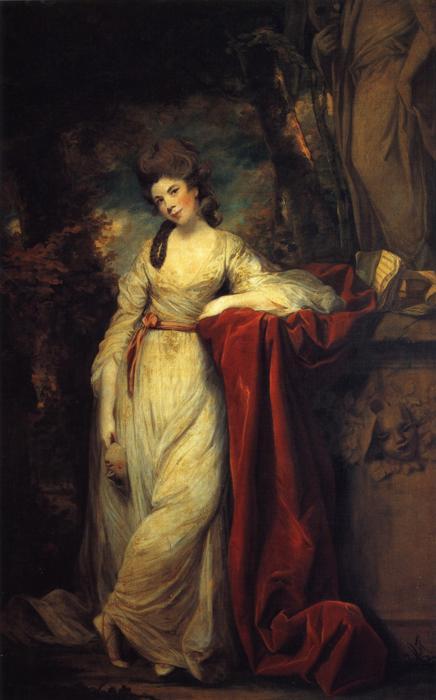
Frances ‘Fanny’ Abington (1737-1815) – Although most famous for her career on the stage of Drury Lane theatre, Fanny Abington (born Frances Barton), had very humble beginnings. As a young girl, she had to support her family and thus, she was a flower girl and a street singer as well as a prostitute. During this period of her life, Fanny showed a great aptitude for theatrics, often performing long Shakespearean monologues, even when she was as young as 12, in taverns to impress gentlemen. She became a servant to a French milliner (a profession that so often went hand in hand with prostitution in this period) which taught her about fashion and French language and manners, virtues that would have her in good stead in the future. Fanny first appeared on the stage of Haymarket Theatre when she was 18, in 1755, as Miranda in Susanna Centlivre’s play ‘Busybody.’ She joined the company at Drury Lane on the recommendation of the greatly admired actor, Samuel Foote. At first, Fanny was overshadowed by older, more established actresses and had to endure an unhappy marriage to her music teacher, James Abington. Her big break was as Lady Teazle in Sheridan’s ‘School for Scandal’; her success in the part won over the hearts of audiences and critics alike, who adored her for her wit and beauty and natural ability in comedic roles. Her nickname of ‘Nosegay Fan,’ acquired when she was a flower girl as a child, carried over into her adult life, and she also became an influencer of fashion through the outfits she chose to wear on the stage and when out in public. She had sporadic appearances on the stage from the mid 1780s to the early 1790s but officially retired in 1799, considered by contemporaries as one of the great comic actresses of the age.
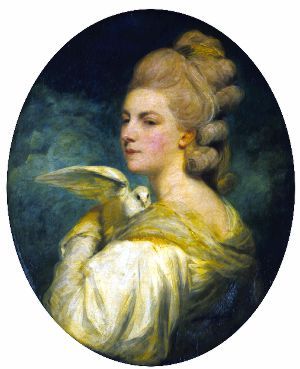
Mary ‘Hellfire’ Davis (1742-1825) – Contemporaries wrote that Mary had been born ‘in a wheelbarrow’ in Covent Garden and this may be reflective of how humble Mary’s background and birth was. She entered the leagues as a beauty when she became a model for Sir Joshua Reynolds; this placement set her on her career as a courtesan. Her first major connection was with Simon Luttrell, Earl of Carhampton, an Irish aristocrat, nicknamed ‘the King of Hell’ for his rakish behaviour. It was through Luttrell that Mary earned the nickname of ‘Hellfire Davis.’ Luttrell introduced her to the son of a merchant banker, Alexander Nesbitt, and the pair married in 1768. Nesbitt settled his estate of Upper Norwood in Surrey on Mary for life. By 1772, Alexander was dead, after suffering from an isolating mental collapse from around 1769. The press hounded Mary, alleging that Alexander’s mental state and eventual death was due to Mary’s disrespectful treatment of him and unnatural behaviour as a wife. Mary continued her career as a courtesan, associating herself in particular with the Hon. Augustus John Hervey, with whom Mary lived in the late 1770s. She received the estate of Evedon on Hervey’s death, as well as a hefty amount of money and land. Her financial stability meant that Mary was at liberty to begin her own salon, where she entertained many Enlightenment thinkers and involved herself deeply within counter-revolutionary movements following the outbreak of the French Revolution.

Moll King (1696 – 1747) – Born Elizabeth Adkins, Moll went by several aliases but her most enduring was that of Moll King. Moll was exposed to London’s underworld from childhood, starting her career as a sex worker as a preteen and becoming involved with Jonathan Wilde (both an informant to the law-force and a gang-leader & criminal) who taught her to pick-pocket. She also married Thomas ‘Tom’ King as a young woman and became friendly with London’s most famous courtesan at the time, Sally Salisbury. In 1718, Moll was arrested for stealing a gold pocket watch and was sentenced to transportation to the Americas. When Moll was discovered trying to re-enter the United Kingdom, she was sentenced to death and only evaded this punishment through her connection to Jonathan Wilde. After returning to England permanently, Moll returned to her husband and opened up a stall in Covent Garden, selling nuts and other street foods. The stall grew and soon, the Kings’ small venture grew into King’s Coffeehouse. This was one of the most popular coffeehouses and taverns in London, frequented by members from all echelons of society. Bawds and procuresses like Mother Needham used the coffeehouse to scout out potential new girls to fill their brothels, and gentlemen used it as a meeting place between their friends and paramours. Moll continued her theft and other underhand activities alongside Jonathan Wilde and she faced arrest, imprisonment and the threat of transportation several times before passing away in 1747. She had at that point, amassed enough money to pay for her son’s education at Eton school.

Teresa Constantia Phillips (known as Con Phillips) (1709-1765) - Con was born to a Captain in the English army, who fell into poverty very early on in Con’s life. At age 13, her godmother, the Duchess of Bolton, funded Con’s education at Miss Filler’s Boarding School in Westminster but when Con’s father married one of his servants, Con’s new step-mother cut off most of Con’s funding for her education and living. Con tried to earn a living as a seamstress and soon attracted the attention of the young Phillip Stanhope, 4thEarl of Chesterfield, who became enraptured by her and may have been the man who raped her at this time under the alias ‘Thomas Grimes,’ though there is speculation that Con’s rapist may also have been the Earl of Scarborough. Con herself believed that her rapist was most probably Stanhope (she seems to not have been 100% sure), claiming that Stanhope had a fascination with adolescent girls and virgins and had tied her to a chair and locked her in his rooms before raping her. This was a traumatic start to her career but soon after this ordeal, Con entered the leagues as a courtesan, allying herself with rich and influential men. In 1722, she married a man who eventually revealed he already had a wife but this bothered Con very little. Over the following years, she herself would marry several of the men she came into contact with, becoming a serial bigamist, and she was kept by many other influential gentlemen on top of these marriages. In 1732, Con had broken with one of her long-term keepers and was finding it hard to re-establish herself as a courtesan so instead decided to open a shop called The Green Canister on Half Moon Street (now Bedford Street in Covent Garden) specialising in condoms, sex toys, pornography and other sex related items. Her shop was particularly popular with women, and became infamous for its ‘flagellation machines.’ In the 1740s, Con wrote her scandalous memoirs, popular but widely criticised (interestingly, these memoirs also included a fan letter from Con to the castrato singer, Farinelli). By the 1750s, Con had settled in Jamaica with her lover but after his death, it is thought that she contracted at least three other marriages before passing away herself in Kingston, Jamaica, in 1765.
Sarah ‘Sally’ Lodge (died in 1735) – Sally’s parents died when she was very young and so she was placed into the care of a vicar who in turn placed her in domestic service, but Sally was eventually dismissed for petty theft. The vicar then had her apprenticed to a dressmaker for five years but according to Sally, she was mistreated by her employer and consequently, she ran away at age 14, working for a short while as a prostitute before starting her own brothel in the parish of St Martin-in-the-Fields in London. Sally’s brothel was incredibly successful, mainly due to the number of influential visitors from the Court. Her establishment was praised by the poet, Alexander Pope, as well as the dramatist John Gay. Unfortunately, according to sources, Sally lost all her money after she was swindled by an Irish confidence trickster and was unable to re-establish herself as either a prostitute or madam due to her age. She traversed several paths in an attempt to regain her footing but ultimately failed and ended her life as a barmaid at the Whale Public House in Wapping, serving brandy and rum to the sailors.
Ann Duck (baptised in 1717– 1744) – Ann Duck was born to a black father (a teacher of swordsmanship) and a white mother in Surrey. By the time she was in her early 20s, she was already a respected member of the criminal gang ‘the Black Boy Alley Gang’ who operated around Clerkenwell in London. Ann was particularly skilled at petty theft as well as highway robbery and also subsidised the money she gained from her criminal activities with sex work. Though she was hauled up before the Justice several times prior to 1744, it appears that many were afraid to punish her because of the men she associated with and who were on her side. She was arrested 19 times before, in 1744, being sentenced to death by hanging at Tyburn after being found guilty of petty theft of five shillings and sixpence, though the fairness of Ann’s trial in this case is debated.

Elizabeth ‘Liz’ Armistead (1750-1842) - By her own admission, Elizabeth Armistead was born Elizabeth Cane on July 11, 1750 in humble conditions. Other than that, the details of early life are vague. Various publications said she was the daughter of a herb-vendor in Greenwich, whereas others claimed she was actually born to a shoemaker, a Methodist preacher, or market porter. She most certainly moved to the centre of London as a model for a hairdresser. She may briefly have worked as a dresser and maid to several of London’s finest actresses at Drury Lane Theatre, too. And at some point, Elizabeth’s charms caught the eye of one of London’s leading madams. According to a notation in Sir Joshua Reynolds notebook from 1771, he visited one Mrs Armistead (the name Elizabeth Cane had now started using for herself) at the brothel of Elizabeth Mitchell. Liz Armistead was charming and pretty. Her laid-back, cheery nature made her popular with men, particularly important and elite men from society’s uppermost echelons. Her first real keeper was Viscount Bolingbroke. Bolingbroke’s friends teased him about his affection for “the Armistead,” especially following several of them bursting in on an intimate moment between Elizabeth and Bolingbroke. This match cemented Elizabeth as a leading light in London’s bawdy firmament. At one point, Bolingbroke arranged for Elizabeth to try her hand at acting. Critics weren’t that impressed with her ability but they did praise her beauty, her singing voice, the way her figure filled her costume, and her smile. After a string of Dukes, rakes and new money, Elizabeth attracted the interest of George, Prince of Wales (latterly, the Prince Regent and King George IV). He made arrangements with his page to pay his addresses to beautiful Elizabeth and their first meeting was in an inn near Bushy Park. The newspapers were in their element after learning of this affair: the Prince had just broken off a passionate affair with the actress, Mary Robinson, and since both she and Elizabeth Armistead were celebrities, the press revelled in pitting the two women against each other in a bitter rivalry for the Prince’s affections. Mary Robinson was in luck, however, as newspaper rumours suggesting Elizabeth Armistead was a “mattress-vote” (a.k.a. trying to influence the Prince with her deep Whig sympathies) lead to the Prince leaving Elizabeth for his new flame, Grace Dalrymple. Elizabeth attempted to re-kindle the affair but to no avail. To avoid offending the future king, she arranged to take a Continental Tour with several of her noble lovers, but not before purchasing a small country estate in Surrey with the help of the Duke of Marlborough’s brother. When she returned from the continent, something had changed for Elizabeth. She had always been a staunch Whig and many of her friends and lovers were members or supporters of the party. One of her long-time friends was the unkempt, uncouth Whig leader and firebrand, Charles James Fox. Their relationship had never been romantic, nor even sexual but by 1783, the pair had settled down into a monogamous, loving relationship. In 1795, Fox and Armistead secretly married and spent their time most of their time either entertaining or gardening, which contrasts greatly with the chaos of their earlier lives. Fox came clean about his marriage in 1802 when he wished Elizabeth to be by his side, as his wife, when he was honoured by Napoleon. In 1806, Fox died of dropsy; reportedly, his last words were “Dearest Liz.” Elizabeth outlived Fox by almost four decades. She continued to live out her life as a respected politician’s widow, being paid a yearly stipend of £500 by King George IV for her earlier services to him (a payment that was later continued by George’s brother, William IV, and his niece, Queen Victoria). Elizabeth died at the age of 91/92 in 1842, very old but not miserable. Her lasting epitaph perhaps comes from Charles James Fox himself who wrote to his nephew following their secret wedding: I think my affection for her increases every day. She is a comfort to me in every misfortune and makes me enjoy doubly every pleasant circumstance of life. There is to me a charm and delight in her society which time does not in the least wear off and a real goodness of heart. If she ever had an equal, she certainly never had a superior.

Grace Dalrymple Elliott (1754-1823) - Grace was born in Scotland in 1754, and soon after her parents’ separation, was sent to be educated at a convent in France until she was 16 years old. By the time she had moved back to England, she was already touted as a beauty, her features said to be striking and unique. This meant that she soon attracted the attention of the Scottish baronet and physician, Sir John Eliot, who eventually married the 17 year old Grace in 1771 (John was 18 years her senior). Grace enjoyed the lifestyle that came with marrying a man so well-respected in society but did not much enjoy married life and had soon begun an affair with one Lord Valentia. When her husband discovered the affair, he sued Lord Valentia for criminal conversation and is said to have been rewarded almost £12,000 as compensation. He divorced Grace, freeing her from the marriage, but now that Grace’s reputation was ruined, she would have to rely on the patronage of wealthy men who would seek her out for her beauty and witty company in return for stability and standing. After briefly fleeing to another French convent, Grace made a return to England in 1776 alongside Lord Cholmondeley, a known rake and philanderer, and this set her up in the leagues as a desirable mistress and companion. Her connection with Cholmondeley threw Grace into the notice of the Prince of Wales (latterly George IV), who is said to have been captivated by her portraits first and foremost. Grace was only very briefly a royal mistress but the affair produced a child in 1782, one Georgina Seymour. Grace insisted the child was the Prince’s (though rumours also speculated that the daughter may have been George Selwyn’s child, or Charles William Wyndham’s) but the Prince claimed that the baby’s skin was too dark to be his and the daughter was put into the care of Lord Cholmondeley. Just as Grace’s connection to Cholmondeley had introduced her to the Prince of Wales, now her relationship with the Prince of Wales brought her to the attention of the Duke of Orleans, who was, like many of Grace’s other flames, a well-known rake. Grace became one of his most established and recognised mistresses and the Duke granted her a permanent residence in Paris in 1786, as well as giving her several other properties. Although the Duke of Orleans was her main keeper, Grace continued to have affairs with members of the European aristocracy during her time in France. Grace would come to witness the outbreak of the French Revolution, being an eyewitness to the September Massacres and it is probable that Grace acted as a spy for the English, as well as risking her life to hide aristocrats from the Revolutionary government and arranging false travel documents for them to escape. Grace herself was arrested in 1793, and after the death of her former lover, the Duke of Orelans, she believed herself doomed too. However, the Revolutionary government spared her and she was released, allowed to live out the rest of her life in Paris before dying a wealthy, elderly woman.
Jane Douglas (circa. 1700 – 1761) - In her time, Jane Douglas was known as the ‘Empress of the Bawds’ and her house in Covent Garden attracted many gentlemen from the highest echelons of society. Little is known of her early life, save for her birth in Scotland between 1698-1700, and the fact that by the time she was 17, Jane was already a sex worker in St. James in London. Her connection to many rich men and women meant that she was able to purchase her own house in St. James and begin procuring her own girls, choosing them based on their elegant manners and aptitude for sex. By 1735, she had moved to Covent Garden, her first property being close to the theatres (and Douglas often pimped out poorer actresses who subsidised their profession with sex work) and thus becoming immensely popular. Douglas furnished the house in the utmost style and hired liveried servants to wait on clients. In 1741, Douglas moved again, this to the opposite end of the main piazza of Covent Garden and made similar, elegant improvements to her property, installing it with the finest furniture and amenities so as to attract peers of the realm and men of high rank. Her prices were high but gentlemen paid for the surroundings as well as the girls, and were provided with condoms in a silk bag and cures for syphilis. For the most part, Douglas’ connection to influential men meant she usually avoided arrest and punishment but she did occasionally fall out with the Society for the Reformation of Manners, and with Sir John Gonson’s anti-vice patrols. She usually escaped with a fine only or used bribery to escape punishment completely, but Douglas did have to spend time in prison once or twice.
Elizabeth ‘Edgeworth Bess’ Lyon – Bess is best known as the mistress and beloved of Jack Sheppard, one of the most notorious criminals in early Georgian London and the young man who gave his name to the popular saying ‘Jack the Lad.’ She was not only his lover, but his partner in crime, but what little we know about her is gleaned from the criminal records of Sheppard’s trial and from the contemporary media who blamed Bess almost entirely for the fate and lifestyle of her beau (even Jack himself, in his confession, would argue that he had been corrupted by Bess, due to her position in life as a sex worker). Bess is described by contemporaries as a ‘large, masculine woman’ with a fondness for drink. A relatively poor prostitute in Georgian London, by the time she had established a strong relationship with Jack Shepherd, they were working together in London’s underworld. Bess convinced Jack to live with her as her husband and their thefts became more and more ambitious. They were first caught by the law after the pair stole a pocket watch from a gentleman in Leicester Fields: Jack was arrested but Bess managed to avoid capture, until she visited Jack in prison the next day and was herself implicated. Remarkably, they both managed to escape prison, after Sheppard used a file to saw off his and Bess’ fetters, cut an iron bar out of the window and descend 25 feet down the walls of the prison by fastening a blanket to the remaining iron bars and lowering Bess and himself down to the ground. They returned to their life of criminality in the Georgian underworld and Jack was arrested another four times, escaping each time with Bess’ help. After his final arrested in 1724, after a large stealing spree in Drury Lane, Jack was sentenced to hang at Tyburn. He lay a lot of the blame for his life of crime at the door of Bess, who he confessed had led him to his life of vice and encouraged him to steal gifts for her. Jack was only 22 when he was hanged, a hero with the poor and entering folk legend but Bess was not so lucky; Jack’s confession was damning to her. It is not known whether she attended the execution of her lover or what happened to her after 1724.
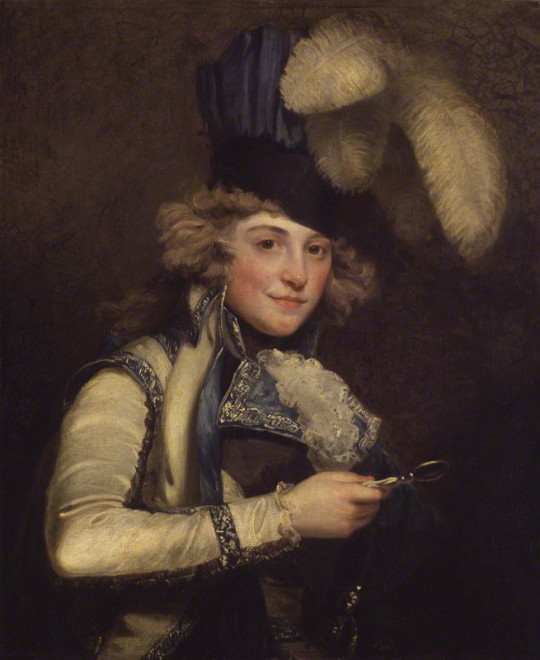
Dorothea ‘Dora’ Jordan (1761 – 1816) – Born Dorothea Bland (she would later change her last name to ‘Jordan’ to liken her crossing from Ireland to England to crossing the River Jordan) in Waterford, Ireland to an acting and musical family, Dorothea had to support her family from a very young age due to her father’s absence. Her mother was an actress herself by profession and noticed Dorothea’s talent early on and set her in good stead on the stage in Dublin. Around this time, Dorothea became the mistress to Richard Daly, the manager of the Theatre Royal in Cork where Dorothea first worked. He was married but Dorothea bore him a daughter, one Frances Daly. Daly was the first of many keepers who would support Dorothea financially and artistically, in exchange for a romantic and sexual relationship. She toured in northern England in 1782 before making her first appearance in London at Drury Lane, as Peggy in ‘A Country Girl.’ Dorothea would be a member of the Drury Lane company until 1809. She was an overnight sensation, best noted for her comedic roles and her breeched parts: it was said that Dorothea looked particularly good in male clothing as she had the most beautiful legs in the kingdom. During her time as an actress, she was kept by a Charles Doyne, Tate Wilkinson (who managed many theatres in the north of England), George Inchbald (actor brother of his more famous actress sister, Elizabeth Inchbald), and finally by a magistrate named Sir Richard Ford, who Dorothea met in 1786 and bore three illegitimate children. Dorothea soon realised that Ford had no intention of marrying her but it was around this time that she had caught the attention of Prince William, Duke of Clarence (later King William IV) and entered into a romantic, monogamous relationship with him. They lived together in relative domesticity in Bushy House and had at least ten illegitimate children together, all bearing the last name of Fitzclarence. Dorothea occasionally returned to the stage during this time, where she was still ever popular, and she was even relatively well liked by Prince William’s royal family. Dorothea and Prince William were obliged to separate in 1811 after the death of the heir to the throne, Princess Charlotte of Wales, as William, along with his brothers, was expected to marry a princess and produce children. Dorothea and Prince William’s children were loved by William’s new wife, Princess Adelaide of Saxe-Meiningen but the same could not be said for Dorothea herself. She was awarded a stipend and custody of her children on the condition that she did not return to the stage but, after Dorothea’s son in law became heavily in debt, she had to return briefly to the stage to pay it off. Prince William received word of this and removed their daughters from her care and cut off her stipend. Dorothea fled to France to avoid her creditors in 1815 but died there just a year later, in relative poverty.
Sources
The Secret History of Georgian London: How the Wages of Sin Shaped the Capital // Dan Cruikshank
The Origins of Sex: A History of the First Sexual Revolution // Faramerz Dabhoiwala
Madams: Bawds and Brothel-Keepers of London // Fergus Linnane
The First Bohemians: Life and Art in London’s Golden Age // Vic Gatrell
The Gin-Lane Gazette: A Profusely Illustrated Compendium of Devilish Scandal and Oddities from the Darkest Recesses of Georgian London // Adrian Teal
Amatory Pleasures // Julie Peakman
Night-Walking: A Nocturnal History of London // Matthew Beaumont, Will Self
A Grim Almanac of Georgian London // Graham Jackson, Cate Ludlow
Courtesans // Katie Hickman
The Covent Garden Ladies: Pimp General Jack and the Extraordinary Story of Harris’ List
London, the Wicked City: A Thousand Years of Vice in the Capital // Fergus Linnane
Perdita: The Life of Mary Robinson // Paula Byrne
Beloved Emma: The Life of Emma, Lady Hamilton // Flora Fraser
Various editions of Harris’ List
#harlots#harlots hulu#18th century#18th century history#georgian london#georgian england#nsfw/#long post/
134 notes
·
View notes
Video
youtube
Saint of the Day – 23 April – St George (died c 303) also known as St George of Lydda, Jirí, Jordi, Zorzo, Victory Bringer – Martyr and Soldier. St George was born c 256-285 in Palestine and was tortured and beheaded to death in c 303 in Nicomedia, Bithynia, Roman Empire. Patronages – • against herpes • against leprosy • against plague • against skin diseases • against skin rashes • against syphilis • agricultural workers • Aragon • archers • armourers • Boy Scouts • butchers • Canada • Cappadocia • Catalonia • cavalry • chivalry • Crusaders • England • equestrians • Ethiopia • farmers • field hands • field workers • Georgia • Germany • Greece • halberdiers • horsemen • horses • husbandmen • knights • lepers • Lithuania • Malta • Montenegro • Order of the Garter • Palestine • Palestinian Christians • Portugal • riders • Romanian Army • saddle makers • saddlers • Serbia • sheep • shepherds • soldiers • Teutonic Knights • 2 dioceses • 181 cities.
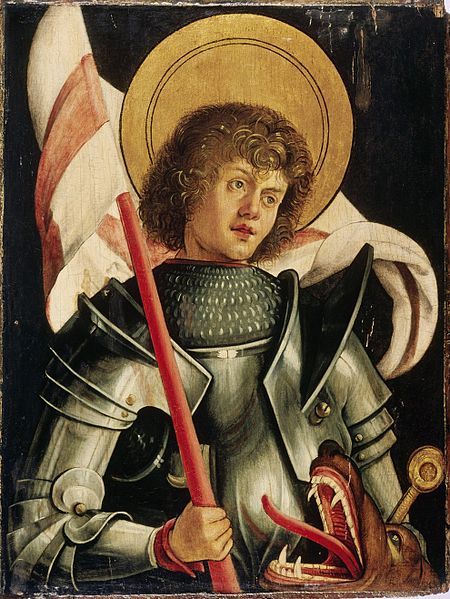
St George was a Roman soldier of Greek origin and officer in the Guard of Roman emperor Diocletian, who was sentenced to death for refusing to recant his Christian faith. As a Christian martyr, he later became one of the most venerated saints in Christianity and was especially venerated by the Crusaders. George’s parents were Christians of Greek background, his father Gerontius was a Roman army official from Cappadocia and his mother Polychronia was a Christian and a Greek native from Lydda in the Roman province of Syria Palaestina.
St George is commemorated and remembered as one of the Fourteen Holy Helpers and one of the most prominent military saints, he is immortalised in the myth of Saint George and the Dragon. Due to his chivalrous behaviour (protecting women, fighting evil, dependence on faith and might of arms, largesse to the poor), devotion to Saint George became popular in the Europe after the 10th century. In the 15th century his feast day was as popular and important as Christmas. Many of his areas of patronage have to do with life as a knight on horseback. The celebrated Knights of the Garter are actually Knights of the Order of Saint George. The shrine built for his relics at Lydda, Palestine was a popular point of pilgrimage for centuries.

There is little information on the early life of Saint George. Herbert Thurston in The Catholic Encyclopedia states that based upon an ancient cultus, narratives of the early pilgrims and the early dedications of churches to Saint George, going back to the fourth century, “there seems, therefore, no ground for doubting the historical existence of St. George”. According to Donald Attwater, “No historical particulars of his life have survived, … The widespread veneration for St George as a soldier saint from early times had its centre in Palestine at Diospolis, now Lydda. St George was apparently martyred there, at the end of the third or the beginning of the fourth century; that is all that can be reasonably surmised about him.”
On 24 February 303, Diocletian, who hated Christians, announced that every Christian the army passed would be arrested and every other soldier should offer a sacrifice to the Roman gods. George refused to abide by the order and told Diocletian, who was angry but greatly valued his friendship with George’s father. When George announced his beliefs before his peers, Diocletian was unable to keep the news to himself. In an effort to save George, Diocletian attempted to convert him to believe in the Roman gods, offered him land, money and slaves in exchange for offering a sacrifice to the Roman gods and made several other offers that George refused.
Finally, after exhausting all other options, Diocletian ordered George’s execution. In preparation for his death, George gave his money to the poor and was sent for several torture sessions. He was lacerated on a wheel of swords and required resuscitation three times but still George did not turn from God.

George was decapitated before Nicomedia’s outer wall. His body was sent to Lydda for burial and other Christians went to honour George as a martyr.
Saint George and the Dragon
There are several stories about George fighting dragons but in the Western version, a dragon or crocodile made its nest at a spring that provided water to Silene, believed to be modern-day Lcyrene in Libya. The people were unable to collect water and so attempted to remove the dragon from its nest on several occasions. It would temporarily leave its nest when they offered it a sheep each day, until the sheep disappeared and the people were distraught. This was when they decided that a maiden would be just as effective as sending a sheep. The townspeople chose the victim by drawing straws. This continued until one day the princess’ straw was drawn. The monarch begged for her to be spared but the people would not have it. She was offered to the dragon but before she could be devoured, George appeared. He faced the dragon, protected himself with the sign of the Cross and slayed the dragon. After saving the town, the citizens abandoned their paganism and were all converted to Christianity.

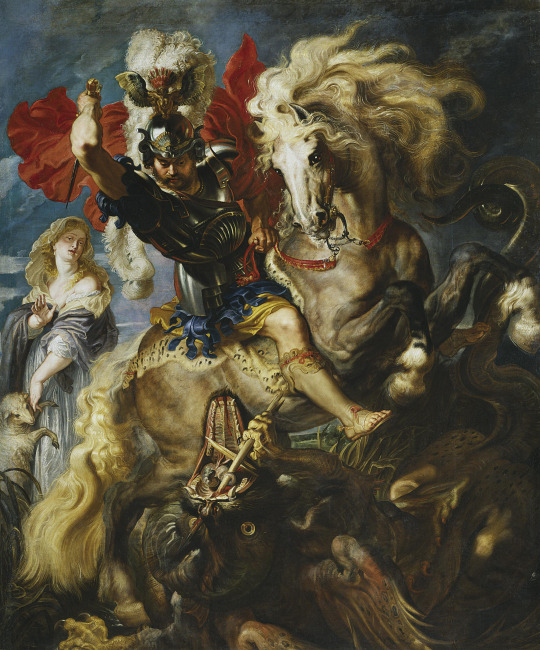

Interesting Facts
Saint George stands out among other saints and legends because he is known and revered by both Muslims and Christians. It is said Saint George killed the dragon near the sea in Beirut, thus Saint George Bay was named in his honour. Saint George’s feast day is celebrated on 23 April but if it falls before Easter, it is celebrated Easter Monday. The Russian Orthodox Church celebrates three St George feast days each year -23 April, 3 November, to commemorate the consecration of a cathedral dedicated to him in Lydda, and on 26 November for when a church in Kiev was dedicated to him. In Bulgaria, his feast day is celebrated 6 May with the slaughter and roasting of a lamb. In Egypt, the Coptic Orthodox Church of Alexandria calls St George the “Prince of Martyrs” and celebrates on 1 May. There is a second celebration 17 November in honour of the first church dedicated to him. Saint George is the patron saint of England and Catalonia and his cross can be found throughout England including on the English and other Commonwealth flags.
In older works, Saint George is depicted wearing armour and holding a lance or fighting a dragon, which represents Christ’s enemies.
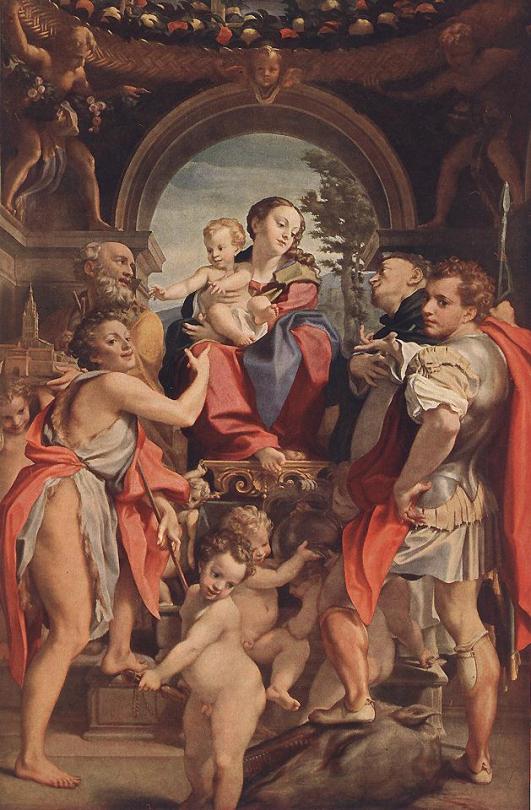
(via AnaStpaul – Breathing Catholic)
52 notes
·
View notes
Text
Happy Saint George’s Day!
St George is the patron saint of England, as well as many other countries, including Greece, Portugal, Lithuania, Bulgaria, England, Georgia, and Spain (Catalonia and Aragon). Saint George's Day is also called the Feast of Saint George. He is famous for supposedly killing a dragon.
St. George’s Day is a celebration of the birth of Saint George. It is usually celebrated on April 23 and on May 6 for Eastern Orthodox Churches. The reason for this is because Eastern Churches use the Julian calendar, and Western Churches use the Gregorian calendar.
He was a real person who was born in Palestine in 280 AD and joined the Roman army. He was executed in his early 20s for refusing to offer a sacrifice to the Roman Gods. St George has also become the patron saint of soldiers, archers, butchers, farmers, boy scouts, those suffering from the plague and leprosy.

0 notes
Text
SAINT OF THE DAY (April 23)

St. George was a soldier of the Roman army who was tortured and beheaded for his Christian faith in the year 303, in Lydda (in modern day Palestine).
He was likely born to a Cappadocian father and a Palestinian mother of noble rank in Cappadocia.
At the death of his father (possibly martyrdom), he moved to Palestine with his mother where he joined the military and apparently served with some distinction, meriting several promotions in rank.
One account of the martyrdom of St. George is Eusebius´ Ecclesiastical History, which relates that when Emperor Diocletian issued an edict "to tear down the churches to the foundations and to destroy the Sacred Scriptures by fire, a certain man of no mean origin but highly esteemed for his temporal dignities, stimulated by a divine zeal and excited by an ardent faith, took it as it was openly placed and posted up for public inspection and tore it to shreds as a most profane and wicked act."
This act of instransigence and holy audacity enraged the emperor who had the man tortured and killed.
This man “of no mean origin,” i.e. of nobility, has been identified by more than one ancient source, including Eusebius, as St. George, though most modern historians of the period state that this is unlikely.
St. George is usually depicted in Christian art as a soldier on horseback killing a dragon with a lance.
This image is a representation of a popular legend of St. George, which first appeared in 1265 in a romance titled "The Golden Legend" in which he saved a town terrorized by a dragon with one blow of his lance.
However, the image is also a powerful symbol of the victory of Christian faith over evil (sometimes interpreted more contextually in the early Church as “paganism”), personified by the devil who is symbolized by the dragon according to the imagery in Revelations.
St. George is invoked as a patron of military causes, not only because he was a soldier, but also due to his appearance to the Christian armies before the battle of Antioch in which they were victorious and to King Richard the Lionheart of England during his crusade against the Saracens.
The cult of St.George, while universal, remains strongest in the Eastern Church where he is venerated as “The Great Martyr.”
Accounts of early pilgrims identify the seat of the cult of St. George at his burial site in Lydda. The cult has been in existence since the 4th century, soon after his death.
In hagiography, as one of the Fourteen Holy Helpers and one of the most prominent military saints, he is immortalized in the legend of Saint George and the Dragon.
His memorial, Saint George's Day, is traditionally celebrated on 23 April.
St. George is the patron of soldiers and the patron of many nations, including Palestine, Lebanon, England, Georgia, and Malta.
He is also the patron of Palestinian Christians and Boy Scouts. He is invoked by sufferers of herpes, skin diseases, skin rashes, syphilis, and snakebites.
5 notes
·
View notes
Photo

New Post has been published on http://tropicalfete.com/2018/02/07/kasava-blu-food-all-inclusive-an-alternative-carnival-sunday-affair/
Kasava Blu-Food All-Inclusive... An alternative Carnival Sunday affair!
In this current carnival climate that offers consumers several generic all-inclusive, cooler-fete & mass market party options, WAD Events is bringing back its signature annual ‘Kasava Blu-Food All-Inclusive’ to add some spice and diversity to T&T’s Carnival Sunday fete line-up.
Now in its second year, the festive event which takes place at the Hotel Normandie in St. Ann’s on Carnival Sunday 11th February 2018 will bring forth an all-inclusive fete experience perfect for those desiring to have a good time in a classy, intimate environment complete with all the necessary elements i.e. great people, sumptuous food, unlimited drinks, live entertainment and non-stop sweet Soca music.
Kasava (stylized Kəsävə) provides a cost-effective all-inclusive fete option and lead up to Carnival Monday and Tuesday for those Soca junkies who may have been partying hard all week but still need their ‘fete fix’ in an atmosphere that is not as fast-paced as a boat ride or breakfast party.
Just as the event’s title suggests both local and foreign-based foodies will have access to an impressive spread of T&T’s local cuisine selections AKA ‘Blu-Food’ prepared by the excellent chefs at Hotel Normandie which includes Oildown, Coocoo & Callalloo, Sautéed Cassava, Rice & Peas, Cornmeal Dumpling & Saltfish, Gingery Stewed Chicken, Stewed Pork, Creole Fish and much more.
Attendees will also be able to sample local fete favourites e.g. Accra Kebabs, Mini Rotis and Doubles and partake in premium drinks and cocktails from Kasava’s skilled mixologists.
In addition to a variety of homegrown culinary and beverage options, Kasava patrons will enjoy live performances by the dynamic Patrice Roberts and the versatile Oscar B and be fully entertained with the pulsating sounds of Soca from DJ Sensational Sammy.
The WAD Events team (which is comprised of seasoned event organizers from T&T and North-America) has pulled out all the stops for a fantastic Carnival Sunday soiree.
Most notably, part proceeds of this event will go to the Rotaract Clubs of Trinidad and Tobago (a youth arm of the Rotary Club).
For a ticket price of $550TT ($80US), experience an alternative Carnival Sunday affair at the ‘Kasava Blu-Food All-Inclusive’ on the 11th of February 2018, at Hotel Normandie, 10 Nook Avenue, St. Ann’s from 4pm – 10pm with secure parking at Normandie, Chaud Restaurant and Boy Scouts.
1 note
·
View note
Text
“Bless you, Damn you”
Based on the prompt: “You are a demon in disguise, faking a cold near a church so a pastor will bless you.”
Nona walked faster, wiping her nose on her coat sleeve and pulling her hat lower on her forehead. The church was right around the corner, and the preacher would be standing out front as he always did, welcoming the patrons of the church and heralding them into the cathedral for Sunday mass. She glanced behind her uneasily, shivering in the cold January air. They would catch onto her plan soon enough, but it would be too late by then. She internally smacked herself for not thinking of this ages ago. It would be so easy! Nona rounded the corner, head down, and in her hurry, ran into one of the men standing outside of the church. “Bishop Micheals!” a male voice cried, concerned, and Nona recognized it as the priest’s. “I’m quite all right,” an older voice replied, and Nona realized that the man she had run into hadn’t been the priest, but a visiting Bishop. The white-haired man helped Nona up carefully. “Are you okay, miss?” he asked, smiling down at her. “I.. uhm…” Nona felt herself about to sneeze. She ducked her head into her elbow and sneezed quite forcefully, her whole body seeming to shake. “Bless you.” both holy men replied automatically. Nona had to hide her smile behind her scarf as they apologized, quite unnecessarily, for her fall. “Why don’t you join us for the mass and some tea afterwards to help that nasty cough?” The Bishop asked her kindly. Again, Nona hid her growing glee behind the flustered act of the young college student she was acting. She nodded mutely, pretending to have lost her voice, and allowed the younger priest to usher her inside. She barely hesitated on the threshold of the building, but then she took a deep breath and stepped in, and to her relief, nothing happened. Nona kept her eyes down, smiled under her scarf, and slipped into the church to take a seat in the pew in the back row, next to a mother and her two young sons, who ignored her. Throughout the mass, her mind was racing as she mouthed the words of the holy verses and hummed the hymns amicably. She was safe among these hallowed halls and under the protection of the two priests. She’d been blessed by a priest and a Bishop! And given a personal invitation into a catholic church. It really must be her lucky day. Lyana and her brainless minions couldn’t follow her here, not without exposing themselves and going through some serious pain. As long as Nona kept her hat on and didn’t look anyone directly in the eye, she’d be safe, at least until the mass ended and she was forced to seek shelter elsewhere. She could always play the homeless card… No, she was dressed too nicely. Nona’s thoughts wandered aimlessly as the mass drew towards it’s conclusion and the procession of acolytes brought the Host up to the front of the church for the Holy Communion. Absently, she noticed that one of the acolytes had dark silver hair and holes in her ears where multiple piercings would fit perfectly. She snickered. The church didn’t generally allow its acolytes such privileges as died hair and so many piercings. Her snicker died as she noticed that the girl’s hair wasn’t died. Nona’s eyes narrowed. Nephilium. The train of acolytes reached the front of the church and presented the host to the priests before fanning out behind them to face the parishioners. Nona stiffened. The girl was looking right at her. Even at the distance, Nona could see her eyes: One a dark brown that seemed almost black, fitting in perfectly with her tan skin. The other was a bright, polished gold, silvery in the middle and leaning towards bronze on the outer edges of the iris. The same hue as Nona’s, lacking the slit pupils and black outer rims that corrupted the edges of Nona’s own irises. The girl’s eye served as a brutal reminder to Nona. What she once was, and what she could never be again. The girl continued to stare until her duties pulled her away to start distributing the holy communion. Nona stared back, unafraid. No one could see her eyes in detail at such a distance, and the girl couldn’t possibly know who she was. She followed the mother and her boys up to receive holy communion when it was time, but couldn’t shake the feeling of unease that came with the vision of that girl’s left eye. Anticipation and anxiety grew with every step she took. Would she be able to receive the communion after so long? What affect would it have on her? She swallowed these as she approached the alter. Nona knelt, stretching out her hands on the bar, even as they shook like autumn leaves. An acolyte walked up on the other side of the bar. “This is the body of Christ, given for us. Take it in the remembrance of He.” The acolyte pressed the host into Nona’s outstretched hands, and if he noticed her nervousness, he didn’t let on, simply moved on to the next person without a second glance. A perfect servant of the catholic church. She thought cynically. The acolyte bearing the chalice moved forward. It was her. Nona fought the instinct to bear her teeth and hiss as the acolytes mismatched eyes met Nona’s gold ones, and lingered more than they should have, a spark of anger present on her face. Finally, she held out the cup and recited the verse, sounding more robotic than even the boy who had bestowed upon Nona the host. “This is the blood of Christ, drink it in remembrance of He.” She thrust the cup into Nona’s hands, like she was doing so against her better judgement. Nona hid a smile. The kid had better instincts than she probably knew. She wondered who the angelic side of the girl’s parents was as she took the cup so hastily given to her and took a good, long draught, savoring the feel of the symbolic wine losing its alcoholic qualities and taking on a richer, coppery taste. She couldn’t resist the urge to run her tongue over bloodstained teeth in full view of the acolyte as she handed the cup yet. The girl’s eyes widened and then narrowed before she snatched the chalice out of Nona’s hands and swiftly moved onto the next patron of the church. Nona stood up slowly, and carefully picked her way back to her spot in the back, where she sat and pondered the girl as the mass finished and the patrons began to filter towards the stairs to the second floor of the church, where Nona presumed there was a community room where soup and drinks would be served. She could feel the host renewing her, waking up old parts of her being that hadn’t been stirred in centuries. She was sure that if one looked into her eyes, they’d be a lot brighter gold than they usually were. She pondered going out, but then Lyana would be on her like a fox on a rabbit, and Nona didn’t want to deal with her today. Finally, once everyone was gone, she got up and walked over and up herself, pausing on the edge of the room before making a beeline to the coffee pot. Half way there, she was assaulted by a tall girl wearing all black, which in itself was odd in a church, that, and the girl’s hair was silver. Dammit. Nona thought to herself as the girl grabbed her shoulder and tried to turn Nona to face her. Nona didn’t budge for a long enough moment to make sure the girl knew she wouldn’t be able to move her, before turning to face her. “What can I help you with, Mortal?” She asked sarcastically, finding that sarcastic truths were often more effective than sincere lies. The girl sputtered before jabbing a finger at Nona. “You’re not human!” She spat, before crossing her arms. Nona noticed with distaste that the girl was a fair six inches taller than she was. “I’m what?” Nona asked, raising an eyebrow and willing her pupils to dilate so that they would pass as circular. “You’re a demon!” The girl insisted, grabbing the collar of Nona’s coat. Nona sighed. “I’m a law student. Some people say that we mustn’t be human, but that’s rather rude. Now. Please release me.” She said, pushing the slightest bit of influence into her words. She must have gone a tad heavy-handed though, because the girl looked rather dazed as she released Nona. She shook her head, confused, before the clarity snapped back into her eyes with a click that was almost audible. “You used Influence.” She hissed, eyes narrowed. Nona smiled, taunting the girl with a flash of sharp canines and contracted snake-like pupils. “Of course I have influence, that’s part of the curriculum. If you’d excuse me, I’d like a cup of coffee.” She laced her words with an infinitesimal amount of latent power, and the girl stumbled back a step without meaning to. Nona pushed past her and walked swiftly to the coffee machine, where she poured herself a cup and looked around for an empty table. She was just scouting one out next to a window when the someone who could only be the acolyte kneed her in the back of the leg from behind. Nona’s knee buckled, and she sidestepped and turned to face her, eyes flashing. “Who are you?” The acolyte asked. “Stop following me.” “What is your name, demon.” “Names have power, darling, if I told you mine, your brain would drip out your ears and your little heart would burst into flames hot enough to incinerate you before you could scream,” Nona snapped her fingers and leaned back on the counter holding the coffee machine. “You may call me Nona.” She was serious again in a second. “Now, tell me who you are, angel-face.” She said, amusing herself by the double meaning traced with accusation that resided in the term of endearment and wrapping her words in influence. The girl’s eyes widened and glazed, her fists clenching at her sides as if she were physically trying to prevent herself from spitting it out. “I am Heloise Minerva Giornello, daughter of the archangel Michael and Marie Anne Giornello. My Name is Lux, Thirteenth daughter of Michael.” “The light?” Nona asked curiously, Jesus, who named you?” She asked rhetorically. “Well in any case, that explains it,” Nona said to herself as the influence wore off Hel and the girl started yelling obscenities at Nona. It lasted about thirty seconds before the door to the priests office slammed open and the pastor stepped out after what Nona could only assume was a hasty apology to the Bishop, who sat in a chair, peering out of the small office. “Heloise!” The priest snapped, “What have I told you about disrespecting guests?!” The man walked over and grabbed Hel by the scruff of her shirt before turning to Nona. “I must apologize for her miss…” “DeNocte.” “Miss DeNocte.” He grabbed Hel’s wrist and started to pull her away, “I am really sorry for her behavior, Hel! Apologize.” He said with the air of a very tired parent who had done this more than a few times. One of the church patrons who was watching the scene shook his head. “Really, Father, It’s no trouble. I still can’t thank you enough for you blessing and the coffee, I’ve just had such an awful cold. “Miss DeNocte, really, she should apologize,” He said warmly before turning to Hel, “Heloise. Apologize, now.” Hel looked up from the floor and made eye contact with Nona before smirking. She pursed her lips and sneered before spitting out: “Damn you!” Nona’s eyes bugged out before she collapsed, dropping the coffee cup on the way down, invisible flames licking her spine, eyes fixed on Hel’s obnoxious smile as they fluttered shut, missing the concerned priest, the gasps from the patrons, and the thundering footsteps as the pastor carried her downstairs and out the front door, the bishop close behind him, calling 911. As the ambulance came to take Nona away, she regained consciousness as they loaded her onto the stretcher. The Bishop insisted on coming to the ER with her, as much as she resisted. An EMT put the mask on her face, and just before she was shut into the ambulance, he leaned over her and snarled, the cold rasp sounding foreign in his gentle voice. “It’s been a long time, Ira Deutus.” Nona’s eyes went wide. It had been a long time since she had heard that name. “It has, Morning Star.” She said, using one of the more humorous translations of his ancient name into the language they were both speaking. Then, he snapped his fingers, and she blacked out, the pain of the Damning fading with her awareness.
#creative writing#fantasy#funny#humor#writing prompt#lol what is this#spn#supernatural#nephilium#seraphim#angels#demons#im a shitty writer#oops
3 notes
·
View notes
Text
I need saint recommendations!
So for Thanksgiving, my family is having a pinewood derby race. I'm working on my car now because I'm home for break and won't have any other time to do it. I've decided to make the "Stairway to Heaven"! That being said, I want to put some saints on the stairway (I'm thinking Tiny Saints, because they're adorable and easy to get). I've decided on St. George (patron of boy scouts), St. Joseph (carpenters), St. Agnes (girl scouts), and Sts. Jude and Rita (impossible causes).
Can anybody come up with any other ideas?
2 notes
·
View notes
Photo


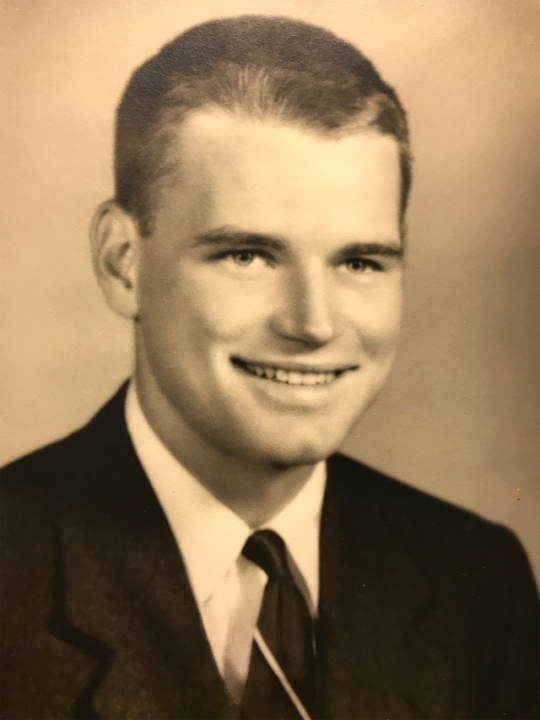

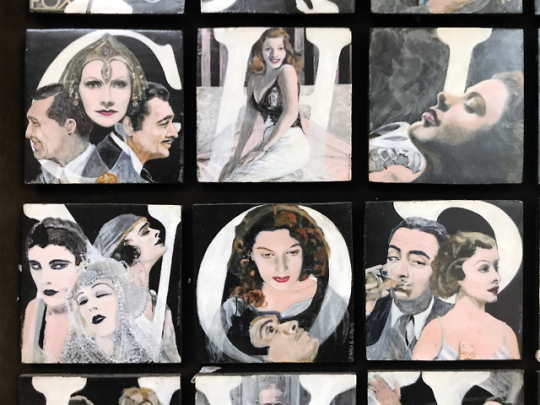



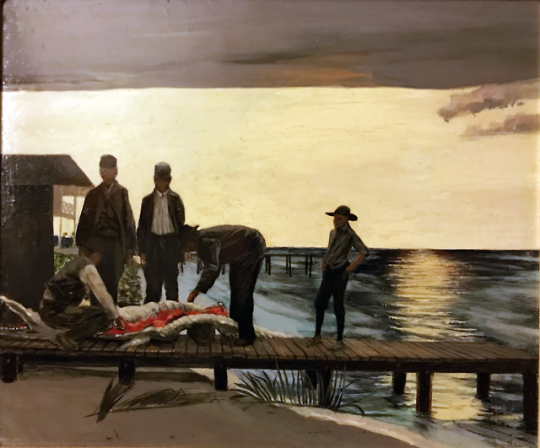
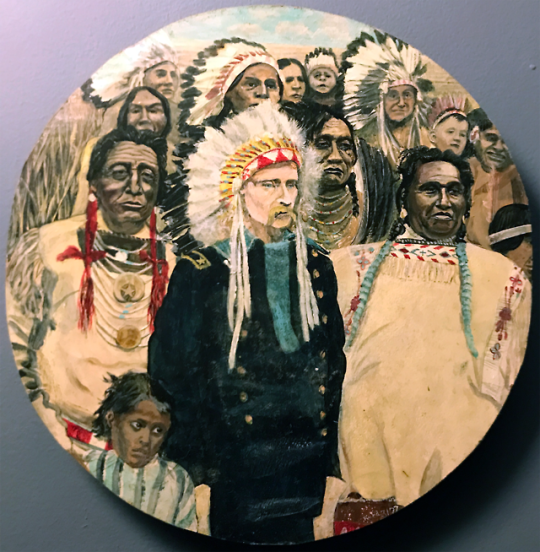
Joseph Wayne Reed, Jr. - 1932-2019
With greatest sorrow and longing, I write to tell you that Joe Reed, our father, is gone.
He was brilliant, funny, unfalteringly sweet, and he recognized us all and loved us to the very last. And that’s the best we could have hoped for when Alzheimer’s disease finally finished taking him from us just before dawn on Monday.
Dad was too huge a figure in my life to be summed up in an obit or a eulogy, but failing to try would deny him the honor he is due.
Born in Depression-era Florida of working-class Hoosiers (his mother was a newspaper bookkeeper and his father an Army medic and eventually a Linotype operator), Dad grew almost fractally; He built a rich life in myriad wild directions towards a sort of glorious crescendo in which everyone around him thrived on his energies and his friendship and his art.
Passionate about the mangroves and palms and snakes and sunset thunderstorms where he grew up on Florida’s Gulf Coast, he Boy-Scouted his way up to Eagle Scout, the highest rank.
Keen for information and knowledge of all sorts, he devoured books. He excelled in school, rode a scholarship to a Yale B.A. - the first of his family in 4-year college - and eventually took a Master’s and a Ph.D. in English Literature that propelled him into lifelong professorship at Wesleyan University.
Mad for movies, he went on to cofound Wesleyan’s renowned Film Studies program, helping launch the careers of more than a few Hollywood blockbuster auteurs. We, his family and friends, gorged on the wonderfully bottomless weekend diet of movies he fed us through a 16mm projector in the darkened living room.
He was forever smitten with his post-high-school sweetheart, Kit. They conspired on witty Christmastime publications, recited epic poetry for fun, proofread each other's manuscripts together aloud - using funny voices for italics and all-caps. They raised three children and taught us by their own example of 61 years of steady marriage how to marry well, endure hardships and disagreements with grit and humility, and stay firmly in love.
The two of them - so inseparable until Kit died in 2017 that they were often known as KittenJoe - saw to it through trips to England and India and Utah and Shelter Island and the 1964 World’s Fair and even the local apple orchard that we kids learned one core lesson: pursue whatever you want in life, so long as you’re happy.
Back in college, I wrote on the dedication page of my multimedia thesis, “For my mother, who taught me how to listen, and for my father, who taught me how to see.”
Because Dad would point things out. And by doing so, he would teach.
He marched us through the Met and the Whitney and MOMA in New York, the Smithsonian in DC, the Museum of Science and Technology in London. A Rembrandt, a fur-lined teacup, a steam locomotive, the Star Spangled Banner itself - pricked enthusiasm to burst from him: “Look, Mackie, isn’t that GREAT?”
We sat together in the St. Petersburg sand, watching thunderheads bluster and flash. “Oh,” he exclaimed, awash in wonder. “Look at THAT.”
“Don’t put your thumb there,” he warned bluntly as the band-saw screamed, teaching me at 12 to respect and love making things with power tools, “Or you’ll lose it.”
And Dad made art. The word is inadequate to his massive body of work.
Decades of beauty and fancy and genuine American weirdness sprang from the moment when, at 32 or so, he casually took up painting pictures of insects and plants because, as he said later, “I was bored.”
His childhood love for insects and the classics blended in wild historical tableaux. He populated that early series of paintings entirely with ants (because, as he said, he wasn’t good at people and all the people in epic masterpieces looked like ants anyway). His Wreck of the Hindenburg is still one of my favorites.
He relished painting the alphabet - a 28-tile template with one letter for each tile (with “&” and “¶” rounding out 26 to a neat 4x7) - for whatever visual topic obsessed him or his patron.
Stretched out on a paint-spattered patent-leather-upholstered chaise-lounge in front of the TV every night without fail, he painted and etched hundreds of alphabets - first of insects and plants, later of movie stars and boxers and Texans and Gertrude Stein and Edgar Allan Poe and the American and British flags and Dubious American Inventions and his wife and his kids.
He indulged in fathomless bizarretés in between:
A series of “Infestations” of Renaissance royalty, beset by bees and worms and beetles.
The “automatic” portrait series (inspired by his illustration for Kit’s wonderful short story “Automatic Tiger”) - John Ford and Marlene Dietrich and John Wayne, half their human faces stripped away to reveal clockwork mechanisms inside their metal skulls.
Gen’l. George Custer and Whistler’s Mother plopped down into quotidian scenes as stern and stoic intruders.
Presidents swam Underwater. First Ladies floated in Space.
On and on and on, Dad sketched and printed and painted and drew, and taught, and wrote, and traveled, full of love for his friends and family, scorn for his foes (Republican convention speeches on TV were often greeted with the cry, "Oh, HORSESHIT!"), and nearly seismic energy for the arts.
All of this is inadequate to honor his life, except to add that Dad burned brightly, laughed heartily and was loved (and sometimes feared by his students) deeply.
He never lectured so much as he orated, raged, declaimed. He was as manically amused by Richard Nixon and Donnie and Marie Osmond as he was wowed by Orson Welles and Akira Kurosawa and George Peckinpah.
In a Wesleyan student review of professors, someone noted with backhanded fondness: “NOT AS POMPOUS AS HE’S CRACKED UP TO BE.” He loved the quote so much he put it on his door to help dispel anxiety in office-hours visitors.
Or maybe just to revel in his brand.
As with Mom, there are to be no services for Dad.
Joseph Wayne Reed, Jr. would want you simply to remember him as when you last saw them together; welcoming you into the seemingly endless open house they made of our huge pile of a Connecticut Victorian home, and warming you with their constant cooking and mentorship and generosity and wicked laughter.
You are invited to contribute via this link to Alzheimer’s Los Angeles, an organization that puts nearly every dollar donated towards support of and care for people with Alzheimer’s disease.
0 notes